Grand slam part of the journey for NYC Marathon winner Tatyana McFadden

Around noon on November 2, swarms of spectators crowded the barriers, two to three deep, along New York City’s Central Park South. Bundled in winter coats and knit caps, they looked more like a gathering at a ski resort than a marathon. But the temperatures that hovered in the 40s, with wind gusts up to 50 mph, didn’t dampen the mood. And when the elite women runners approached, the onlookers even drowned out the Motown band Cool Shoes, which was playing nearby. Waving foam fingers and rattling cowbells, the crowd erupted in a torrent of shouts as Mary Keitany of Kenya closed in on Jemima Sumgong. After the pair swept past, Keitany would overtake her countrywoman with 800 meters left to win the 44th New York City Marathon by three seconds.
But all those eyes fixed on the runners as they seemed to glide past toward Columbus Circle had missed the chance to see the fastest woman in the world.
If you had arrived an hour earlier you would have been one of the few who got a glimpse. When she surged up 59th Street with her hair tucked in a braid under her helmet and a silver cross dangling from her neck there was no crowd. There were joggers shuffling along the course route, before a policeman shooed them off. There were a few shouts of “keep rolling.” It felt more like a high school cross-country meet than a major international competition. Cool Shoes hadn’t even shown up yet.
Tatyana McFadden didn’t seem to notice.
Windy conditions challenge runners at New York City Marathon
She kept her eyes ahead, her jaw clenched, her arms churning and driving her racing chair uphill. The only competitors near her were some professional male wheelchair racers. They had started 15 minutes ahead. “I like keeping up with the boys,” McFadden would say after the race.
“There is not a more dominant athlete in any sport at the moment than Tat [in] women's wheelchair marathons,” said Kurt Fearnley, who won the men’s wheelchair race to take home his fifth NYC Marathon title. “It's incredible.”
Yet, if you asked most of the crowd who cheered on the rest of the runners as they passed about the 25-year-old Illinois graduate you got mostly blank stares. “No, sorry, I’ve never heard of her” and “Nope, doesn’t ring any bells” were common refrains. “Is she that tennis player?” one spectator asked.
But maybe they don’t know her story because McFadden was never supposed to be here—and not just at the apex of endurance sports.
If they did know her story then they would know why McFadden is willing to work out twice a day and log 120 to 200 miles a week. They would know why her teammates nicknamed her “the Beast.” Why her coach had to convince her it was OK to leave her racing chair at home and go to St. Thomas for two weeks with her family in August. And they would know why she touches that cross whenever she gets nervous before a race.
“I have to believe that her childhood played a role in her success,” says McFadden’s coach, paralympian Adam Bleakney. “Her determination and mental fortitude can be traced back to all of the challenges she had when she was so young.”
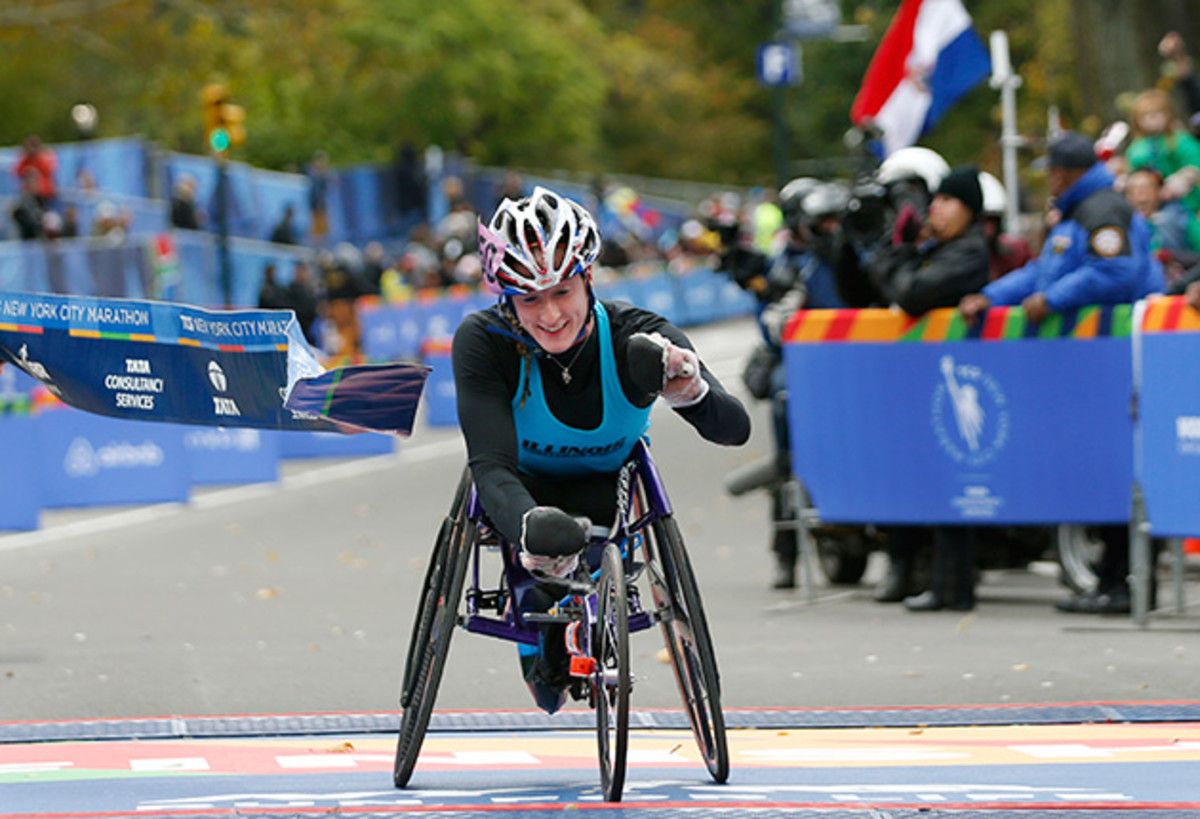
Nineteen years ago no one would have called TatyanaPolevikova“the Beast.” She was born—in St. Petersburg, Russia (then Leningrad, U.S.S.R.)—with spina bifida, the congenital developmental disorder that leaves a gap in the spine, causing her to have paralysis from the waist down. Tatyana received no medical attention. Instead, she was sent to orphanage that had no funds to provide her with a wheelchair.
But when Deborah McFadden walked into Orphanage 13 in St. Petersburg in 1994, on a business trip as a part of her job as the Commissioner of Disabilities for the U.S. Department of Health, she noticed something different about the six-year-old girl. What caught McFadden’s attention wasn’t Tatyana’s buzzed head, her atrophied legs or that when she walked into another room Tatyana followed her—on her hands.
“What I remember most was her bright eyes and that smile,” Deborah says of the girl who climbed onto her lap and was fascinated by her camera. “I wasn’t looking to adopt when I went to Russia, but there was a connection that had never happened to me before.”
7 tips from the pros for running your best marathon
Tatyana knew it too. She told the director of the orphanage after Deborah headed back to her hotel after their first meeting, “That’s my mom.”
A couple of more meetings and a few months later she was proved a prophet. McFadden adopted Tatyana and after mounds of paper work and red tape, she brought her home to Clarksville, Md.
But traveling over 4,000 miles across the Atlantic didn’t erase all of Tatyana’s problems. After weeks of repeated surgeries, doctors told Deborah that they expected Tatyana to live for only around two years. Three at the most.
“They told me unless I got Tatyana strong there wasn’t much hope for her,” Deborah says.
In addition to battling her health problems, Tatyana also struggled to adapt to her new surroundings. She remembers asking Deborah to put her ice cream in the microwave because she couldn’t stand the cold. She remembers scarfing down a few spoonfuls of Lucky Charms then hiding the rest in her room, because she wasn’t used to having a kitchen stocked with food.
“The transition was really hard and I was scared to be alone,” McFadden says. “I was always afraid that if I did something wrong my [mother] would leave me.”
[pagebreak]
On Sunday, with less than two miles to go in the marathon, McFadden was alone in the front. After the wheelchair division set out on an abbreviated 23.2-mile route (starting on the Brooklyn side of the Verrazano-Narrows Bridge) instead of the typical 26.2-mile one, due to concerns over the wind, McFadden took the early lead. She then traded off with Manuela Schar of Switzerland and Japan’s Wakako Tsuchida before making her move.
While she hasn’t lost a marathon since New York in 2012, McFadden still has fears while she races. “She tends to be a little skittish going downhill,” says Bleakney. “Her finger is resting on the break on any descent.”
McFadden admits that she doesn’t relish this part of the race the way most other runners do. “I do have a need for speed, but I like going up the hills instead of down,” she says. “Everyone else loves to go down the hills but I’m not a huge fan because sometimes you’re going down at more than 30 miles per hour. One mistake and you can be severely injured.”
Given her background are you surprised? McFadden likes to be in control. She likes the challenge of going uphill—the trajectory of her life. “Climbing is definitely my an advantage,” she says.
But this afternoon, that advantage put the race in jeopardy. As McFadden was about to exit Central Park, she fell out of her chair.
“That was my fault,” McFadden said. “It was coming into the turn before the climb, right before the finish, that one last right turn. And it's a very tight turn. I just took the wrong line…I think I hit a bike. It was quite embarrassing.”
So McFadden had a decision to make. She had labored for 22 miles against a headwind that at times reach tropical storm levels. She was exhausted. But the finish line was uphill around the corner. Could she get up before Schar and Tsuchida passed her? Would she ask for help?
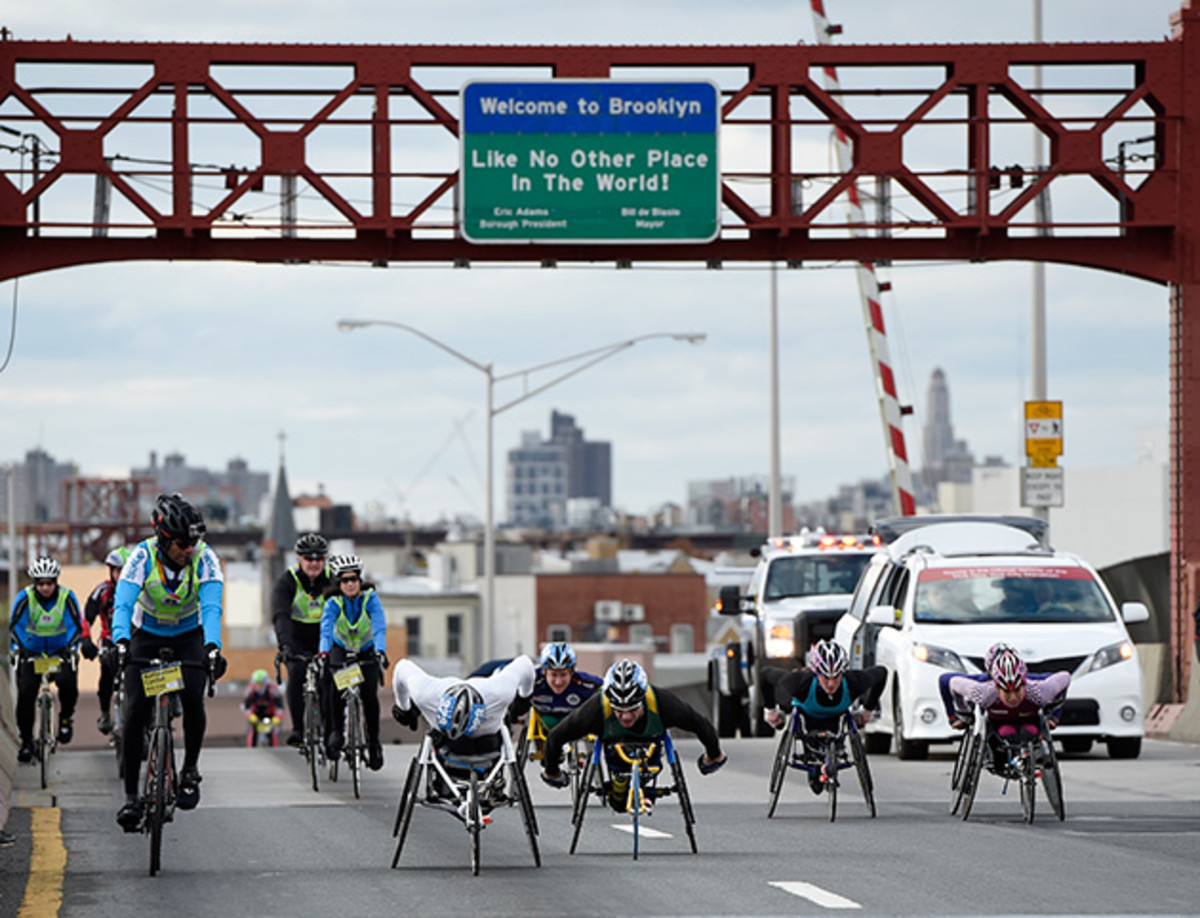
repeated over and over again, whenever someone tried to help her make breakfast, reach a shelf, or navigate her way through the house in her new wheelchair. It became her mantra.
“Ya sama.”
Deborah had no clue what Tatyana was saying till she asked her neighbors who knew Russian.
“Ya sama doesn’t just mean, ‘I can do it,’” Deborah says. “It means, ‘I can do it myself.’ Tatyana didn’t want any help.”
So how was Deborah going to help her anemic daughter with an independent streak survive?
Simple….sports.
She enrolled Tatayana in a local sports club, where she learned gymnastics and took swimming lessons. But that was just the start. Basketball? Check. Ice Hockey? Why not? Archery? Of course.
“I never thought to myself to set out to raise a paralympian,” Deborah says. “I got Tatyana involved in every sport I could because I wanted her to live.”
She didn’t just live…she thrived and, at age 15, became the youngest member of the U.S. paraolympic team. At her first Paralympic Games, in 2004 in Athens, she took silver medal in the 100 meters and bronze in the 200 in track and field.
She hasn’t slowed down. McFadden is now a 10-time Paralympic medalist, with three golds. The success on the track transferred to the roads, even though Bleakney had to coax his star pupil into entering the Chicago Marathon in 2009. Some quick math helped. “I just told her, Imagine it’s just like running 500 meters four and twenty times,” he said with a laugh.
So Deborah flew out to Chicago to watch Tatyana compete in her debut marathon. But she missed the finish. The reason? She was busy talking with a couple and showing them pictures of her daughter. She didn’t expect Tatyana to finish for at least another 20 minutes.
“That looks like your daughter!” the couple shouted when a racer with her hair tucked up in a braid whizzed by at the front of the lead group of four racers.
It was her. McFadden won by three seconds with a time of 1:50:47.
And while most of the competitors labored after the finish, gasping for air, the only expression on McFadden’s freckled face was her trademark smile.
“She kept asking, ‘Can we do it again?’” Bleakney remembers.
Classic SI shots of the New York City Marathon
1978
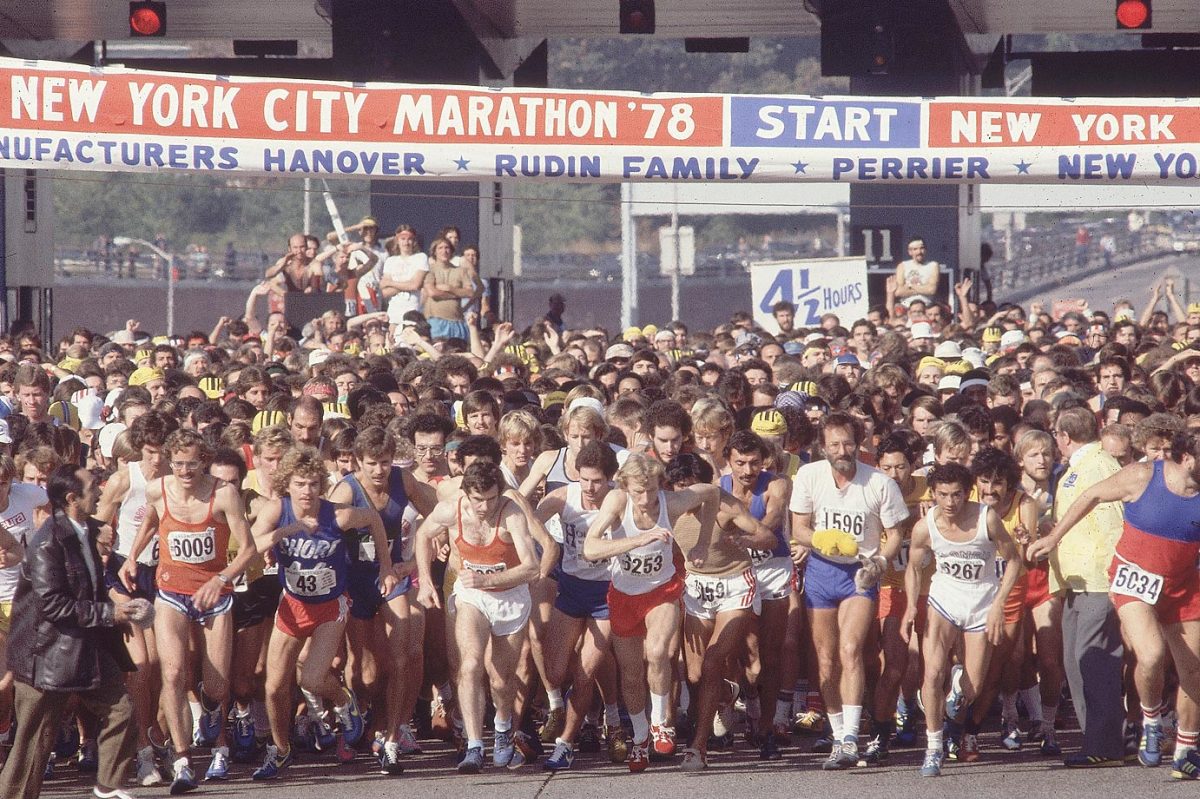
1979
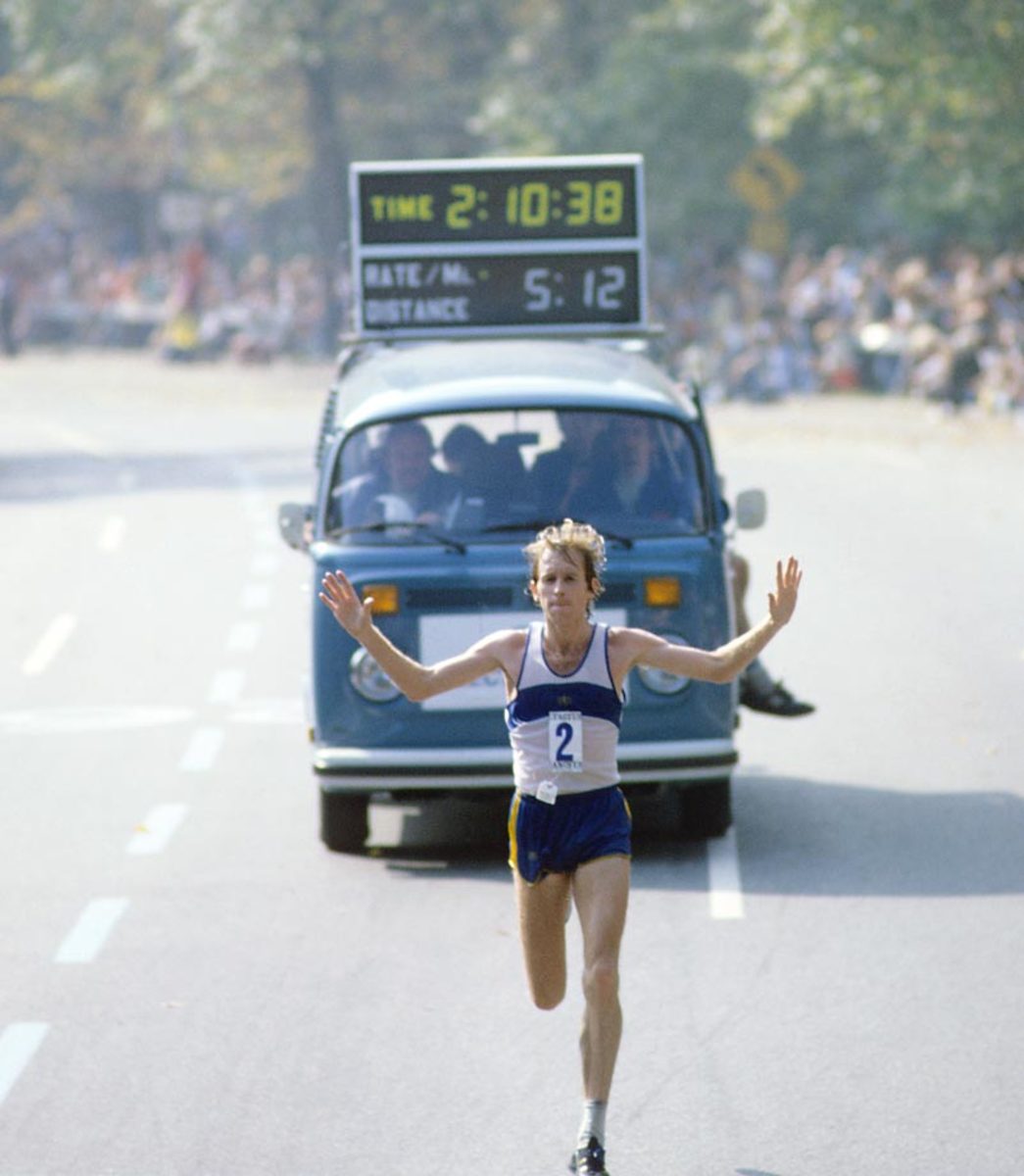
Bill Rodgers
1979
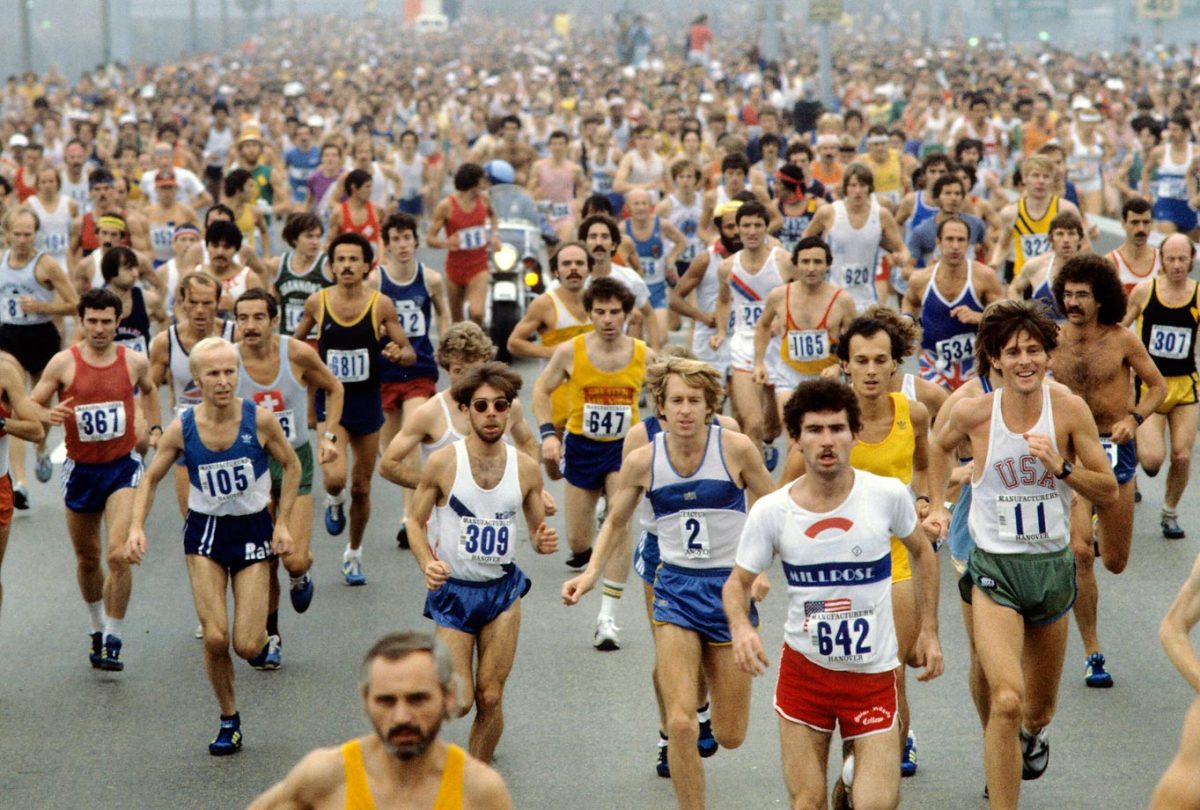
1980
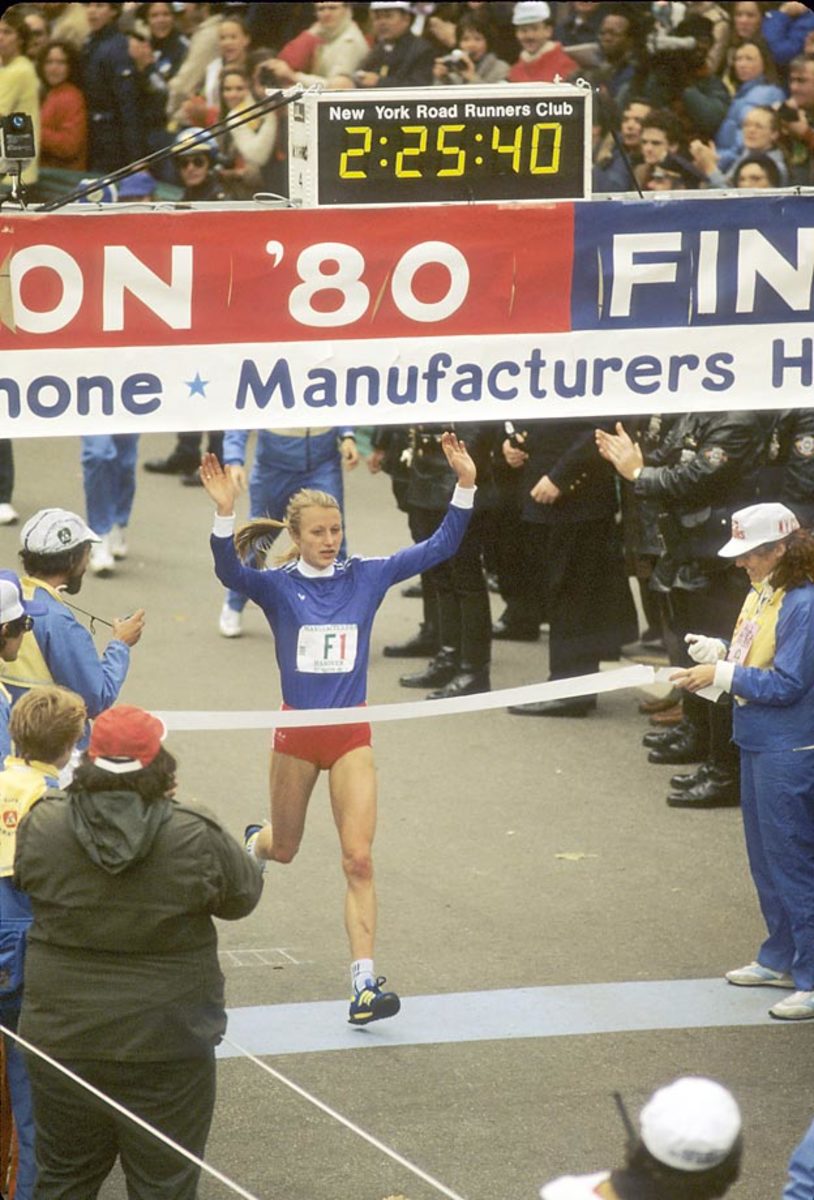
Grete Waitz
1980
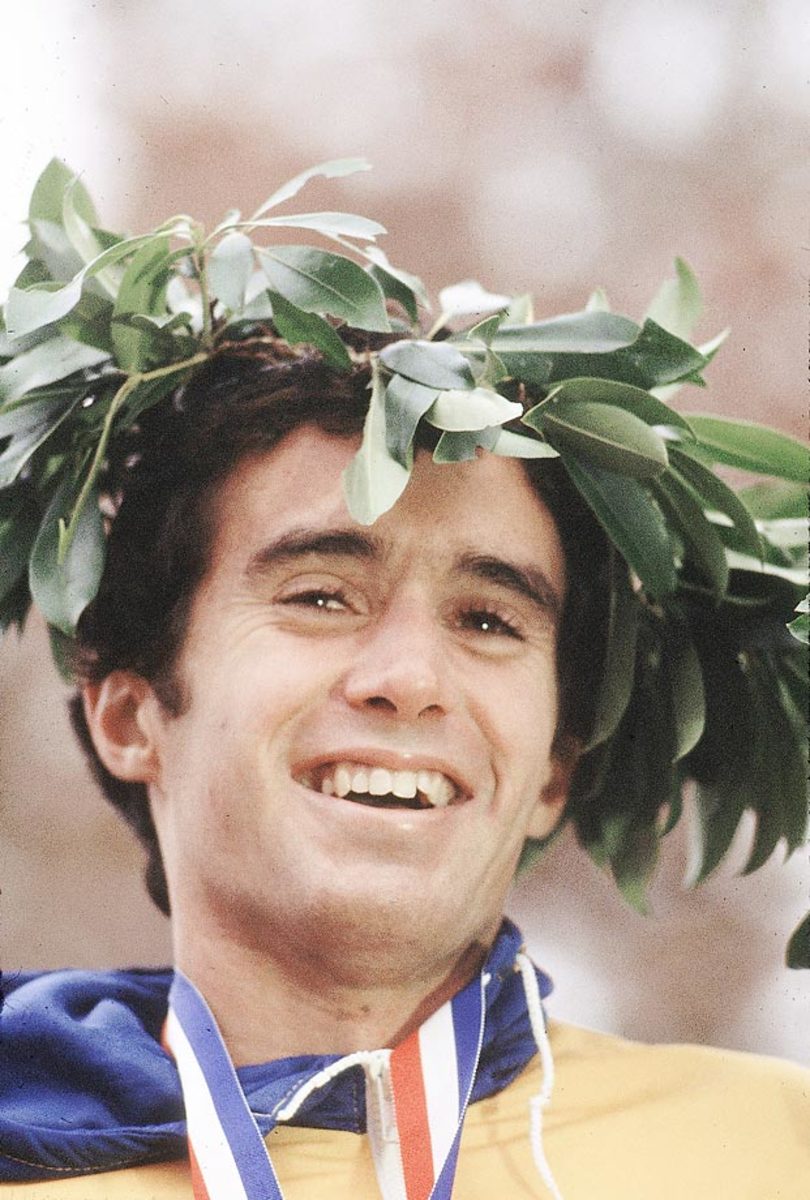
Alberto Salazar
1981
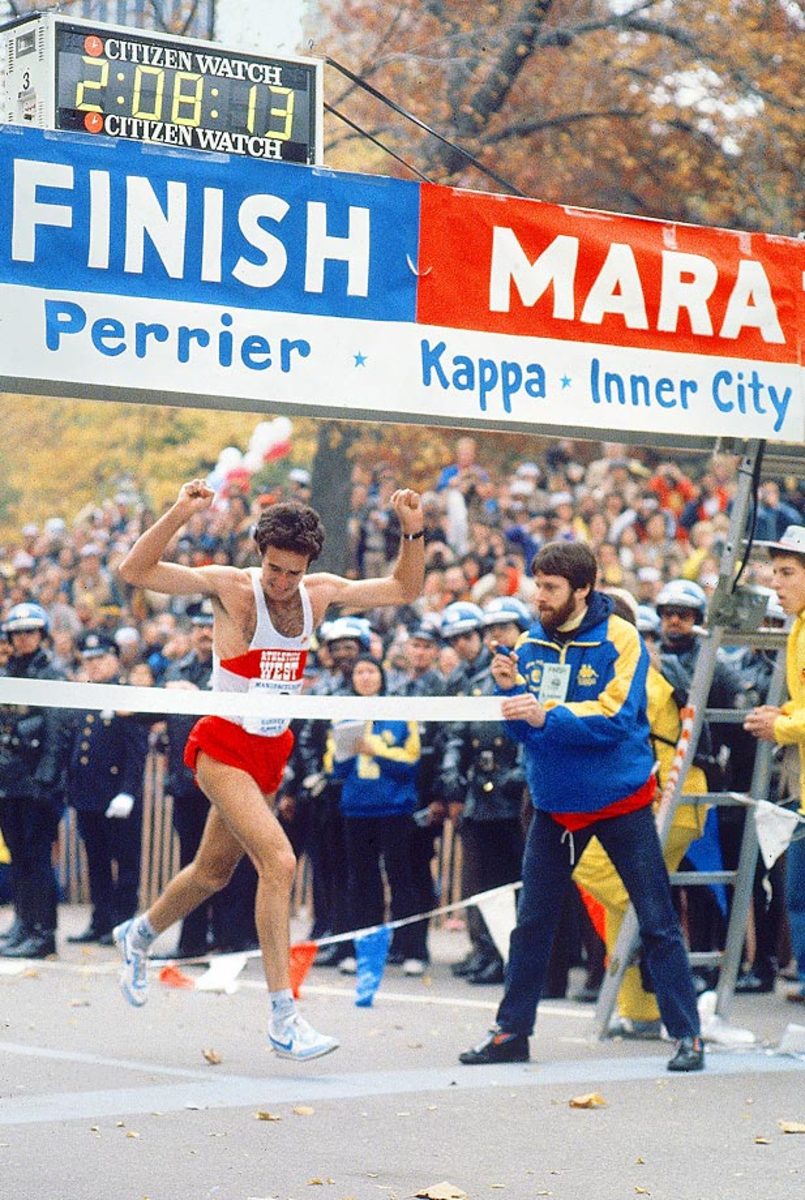
Alberto Salazar
1983
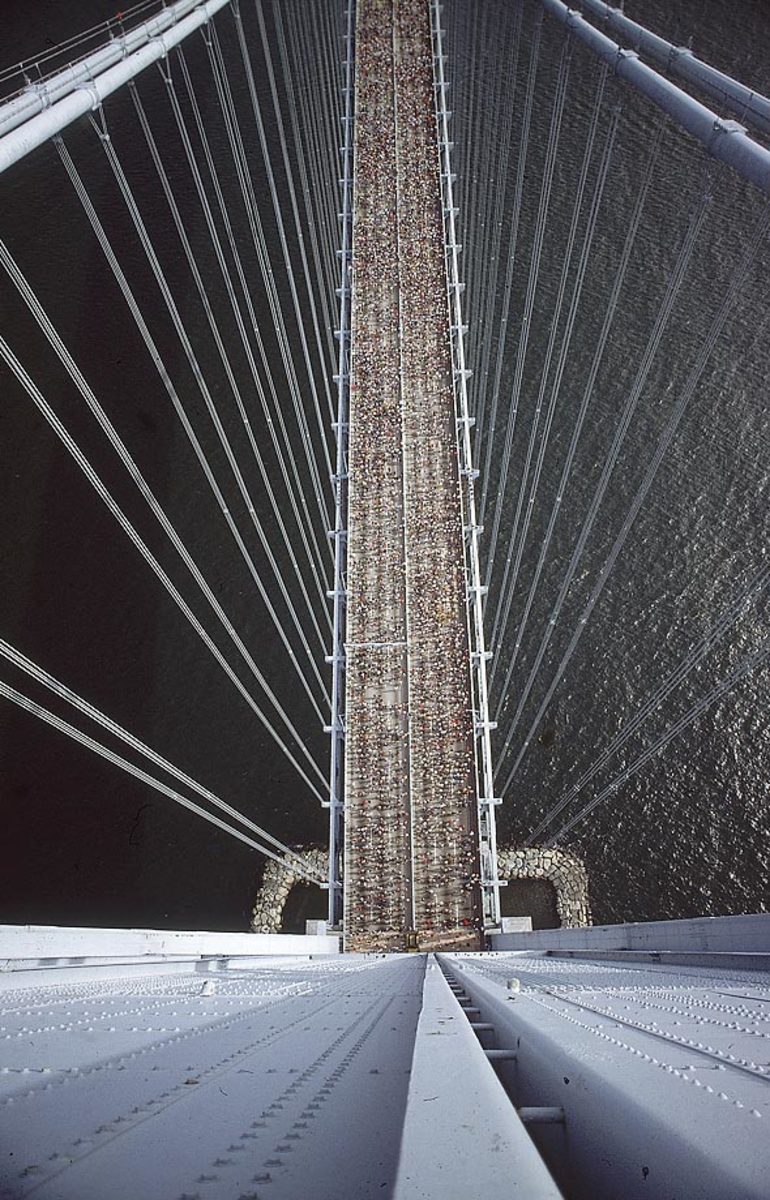
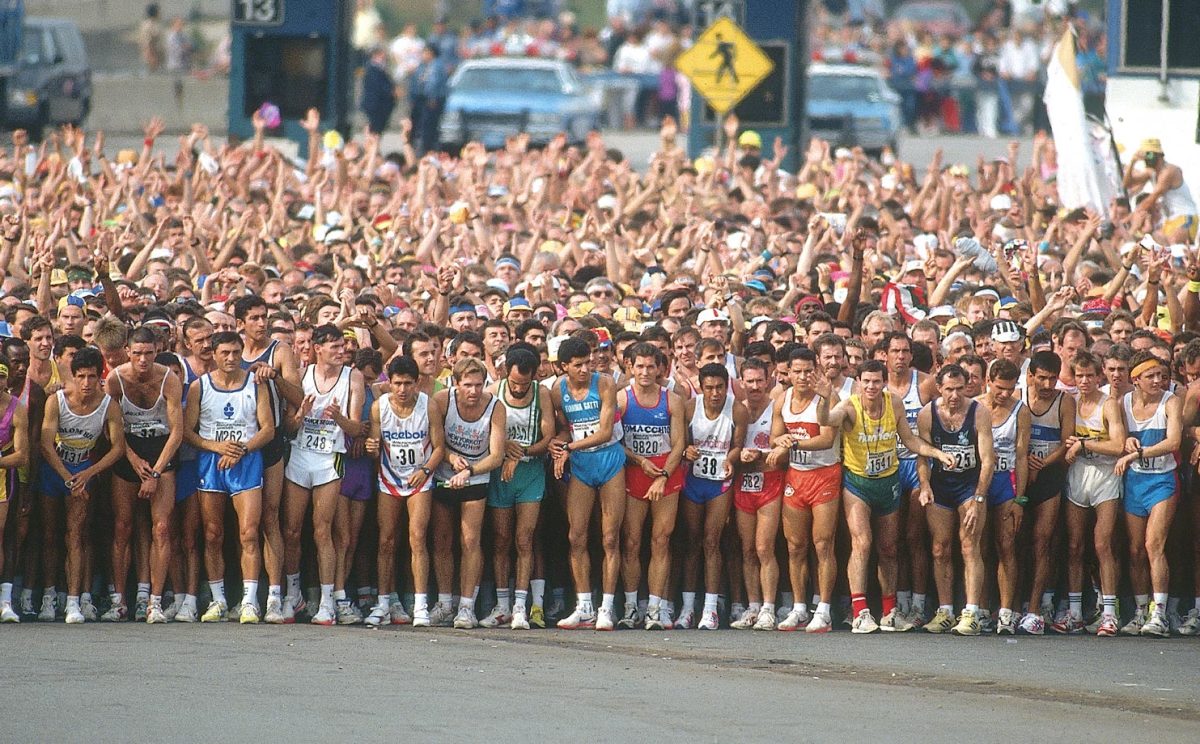
1992

Verrazano Narrows Bridge
1992
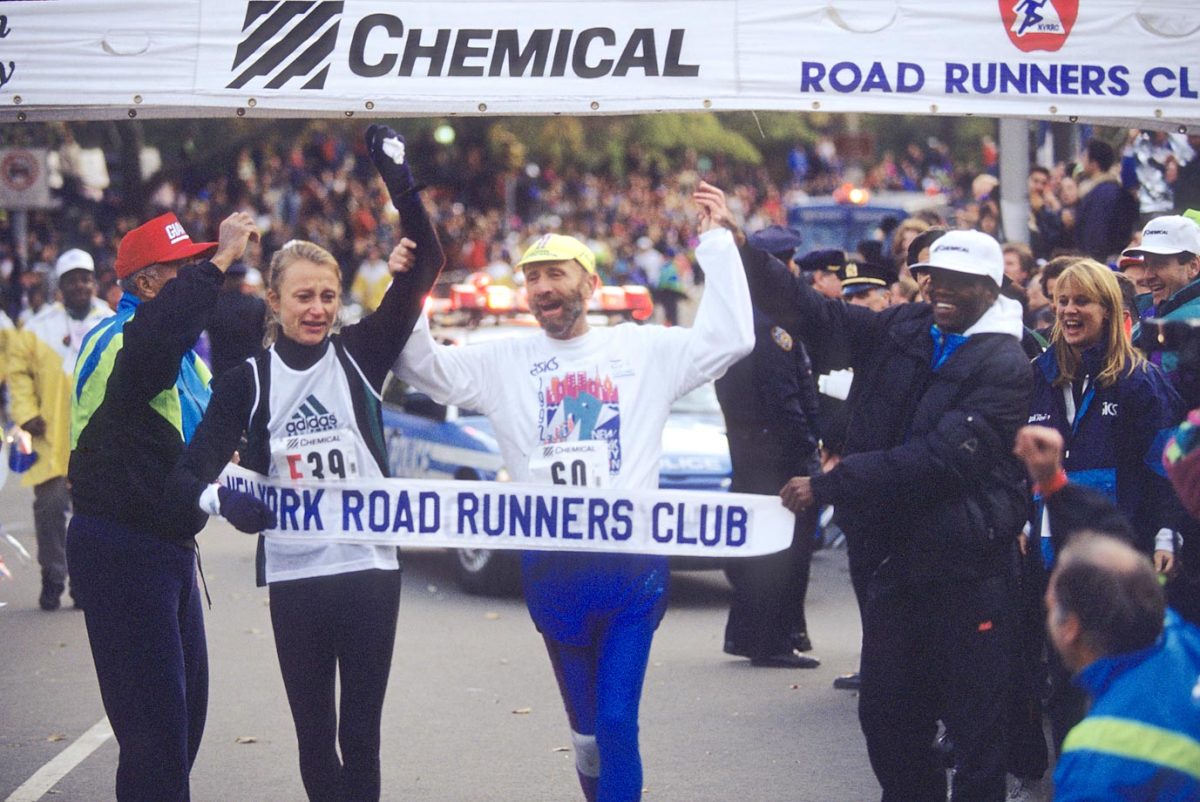
Grete Waitz and Fred Lebow
1995

2003
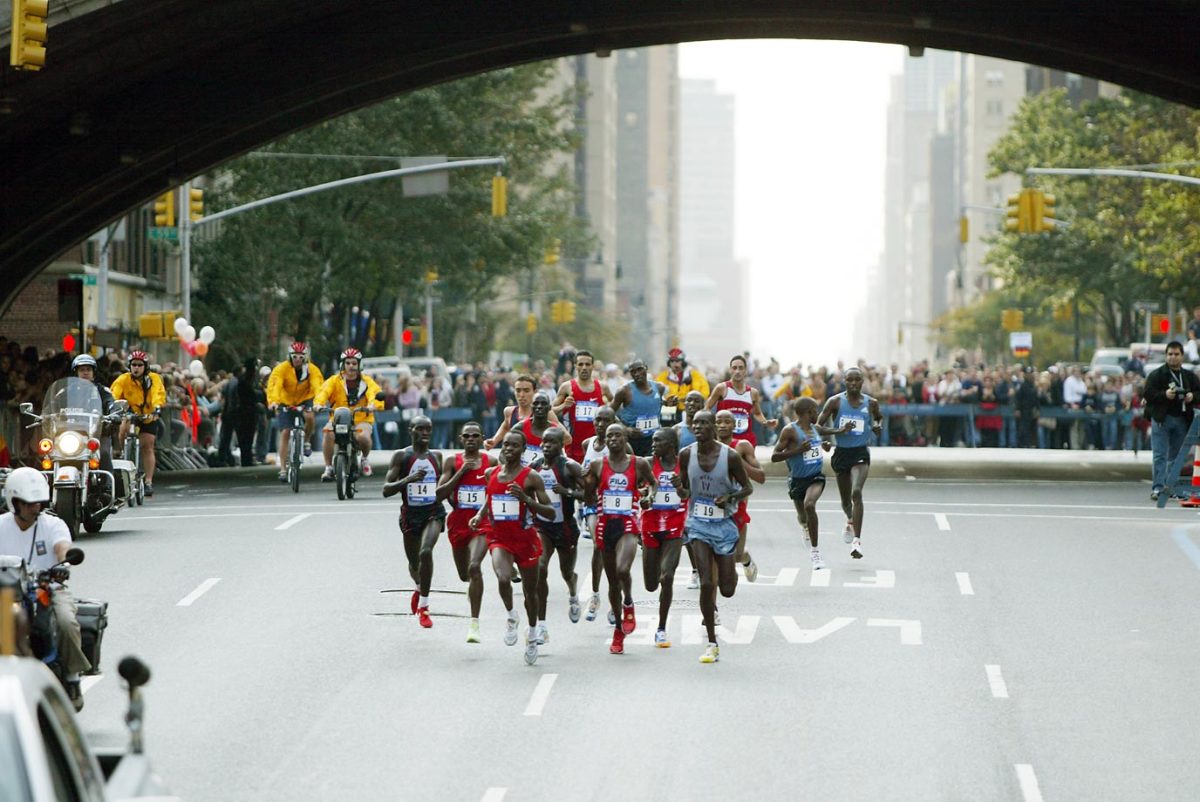
2003
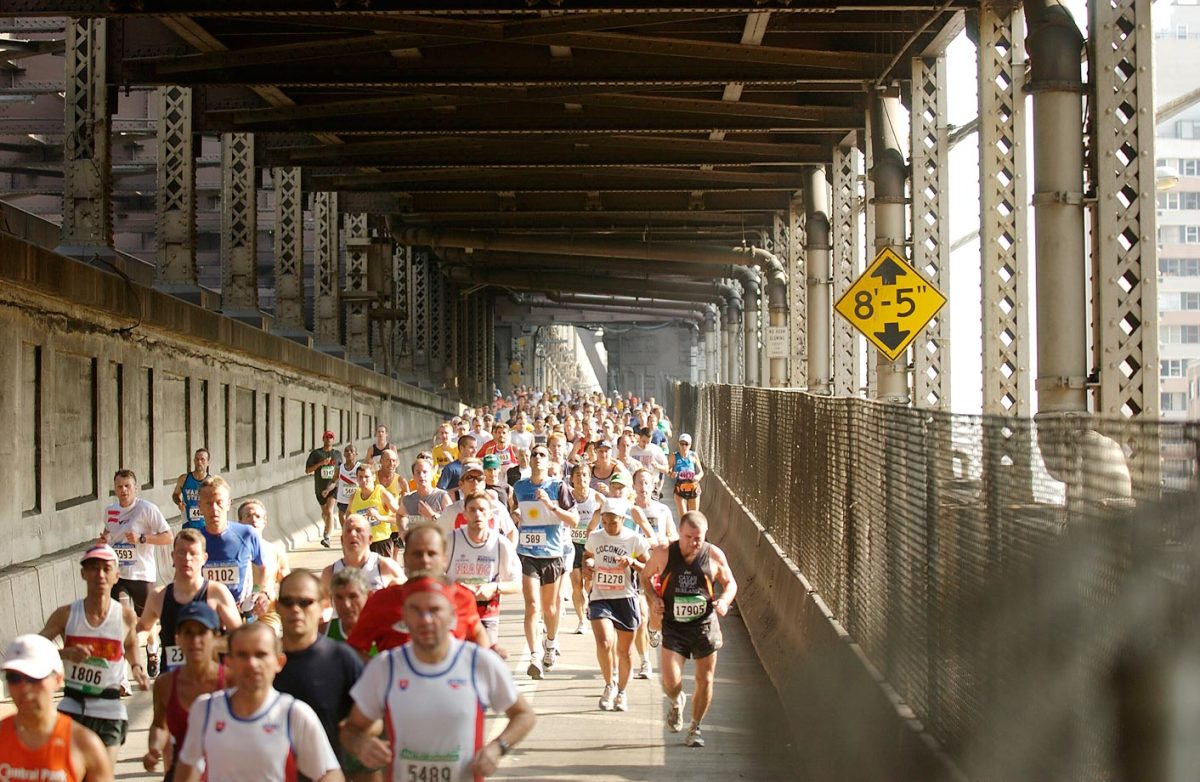
2004
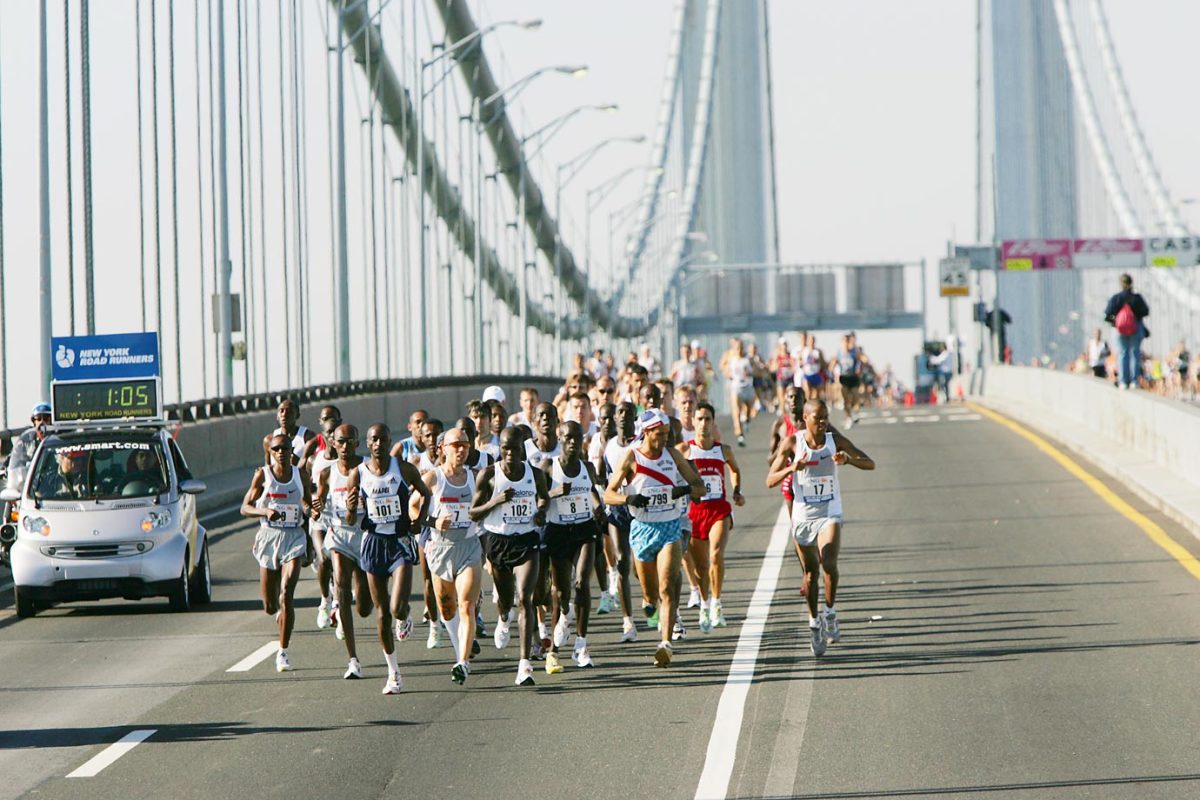
2004
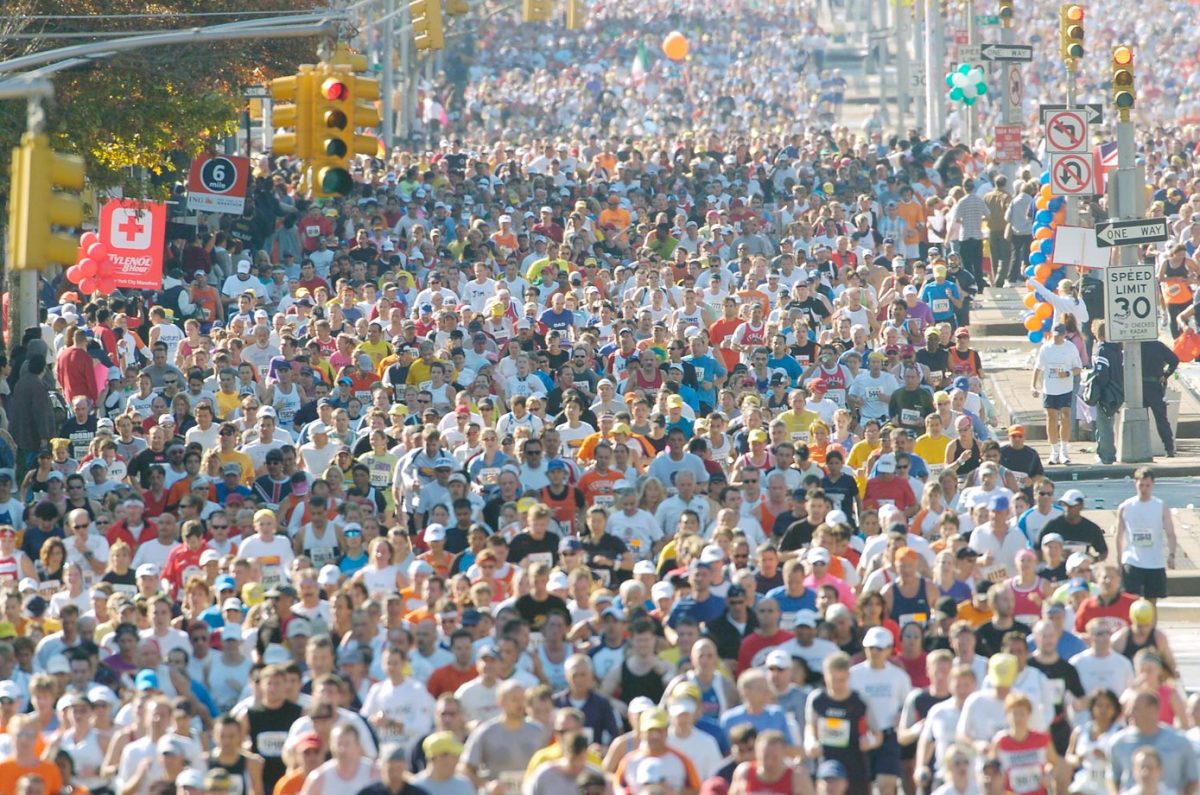
2005
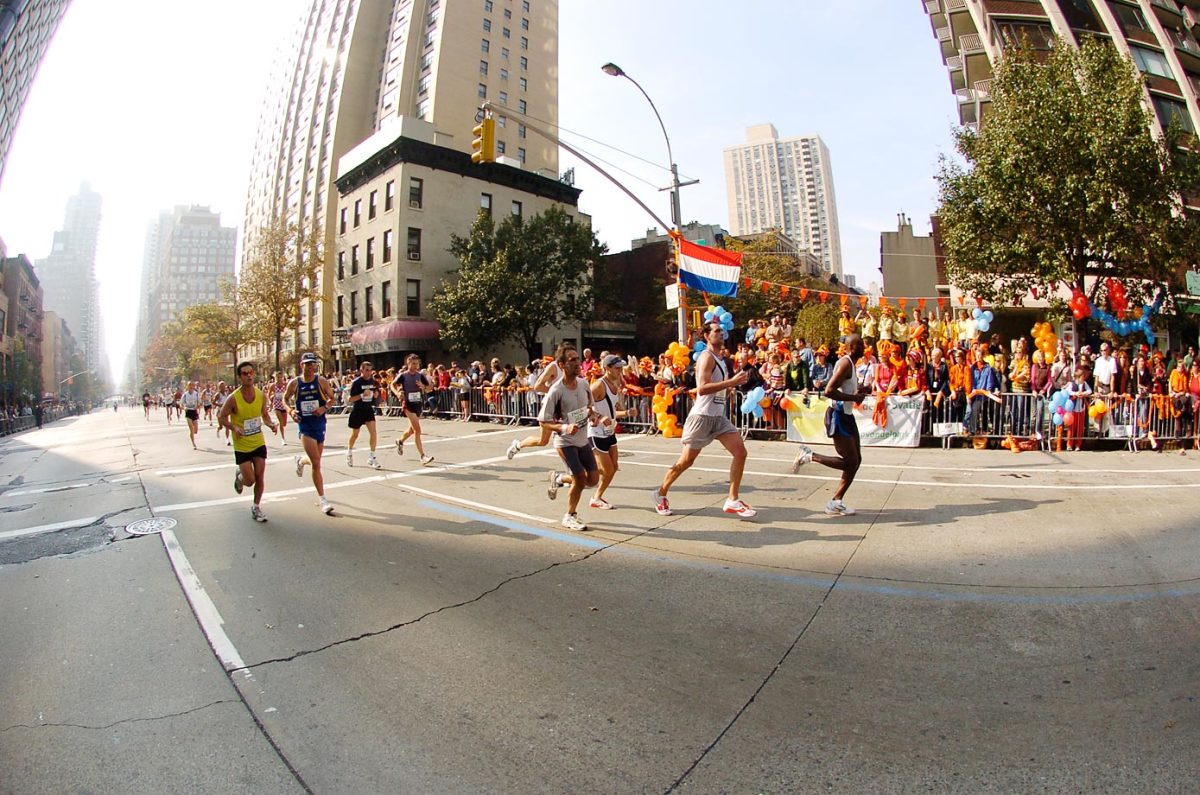
2005
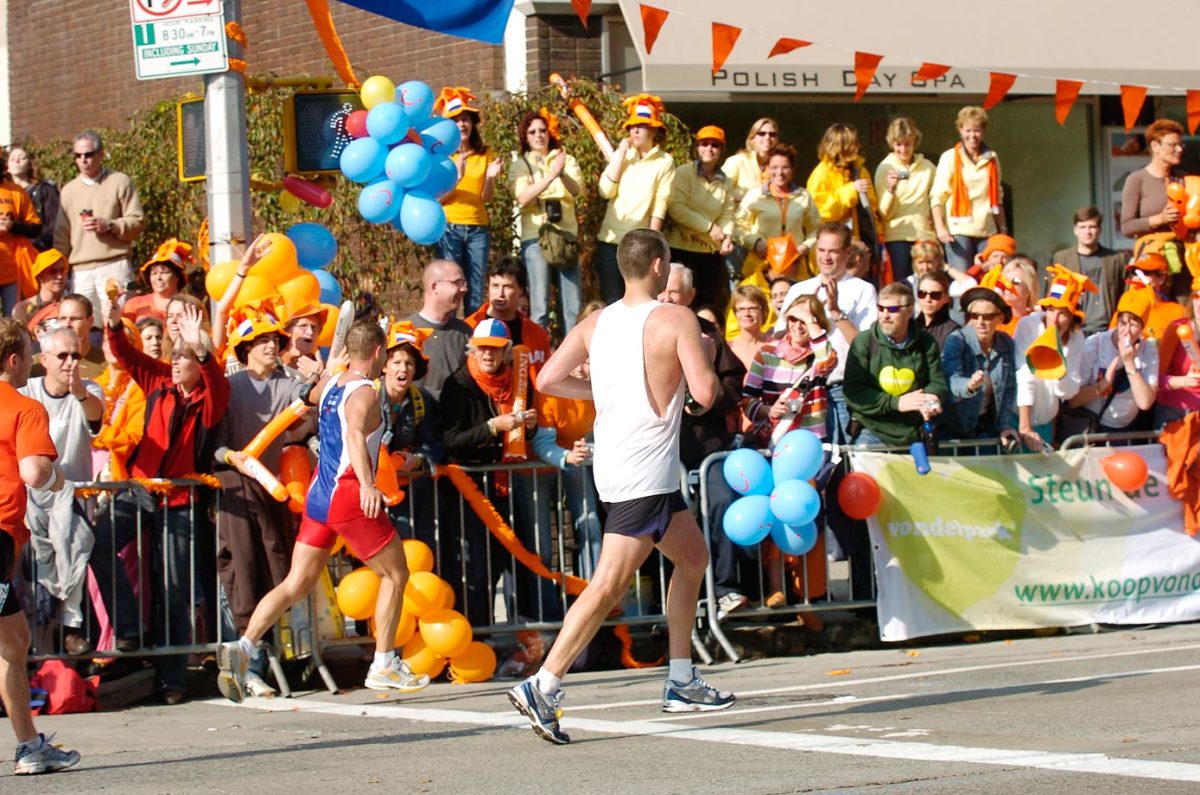
2005
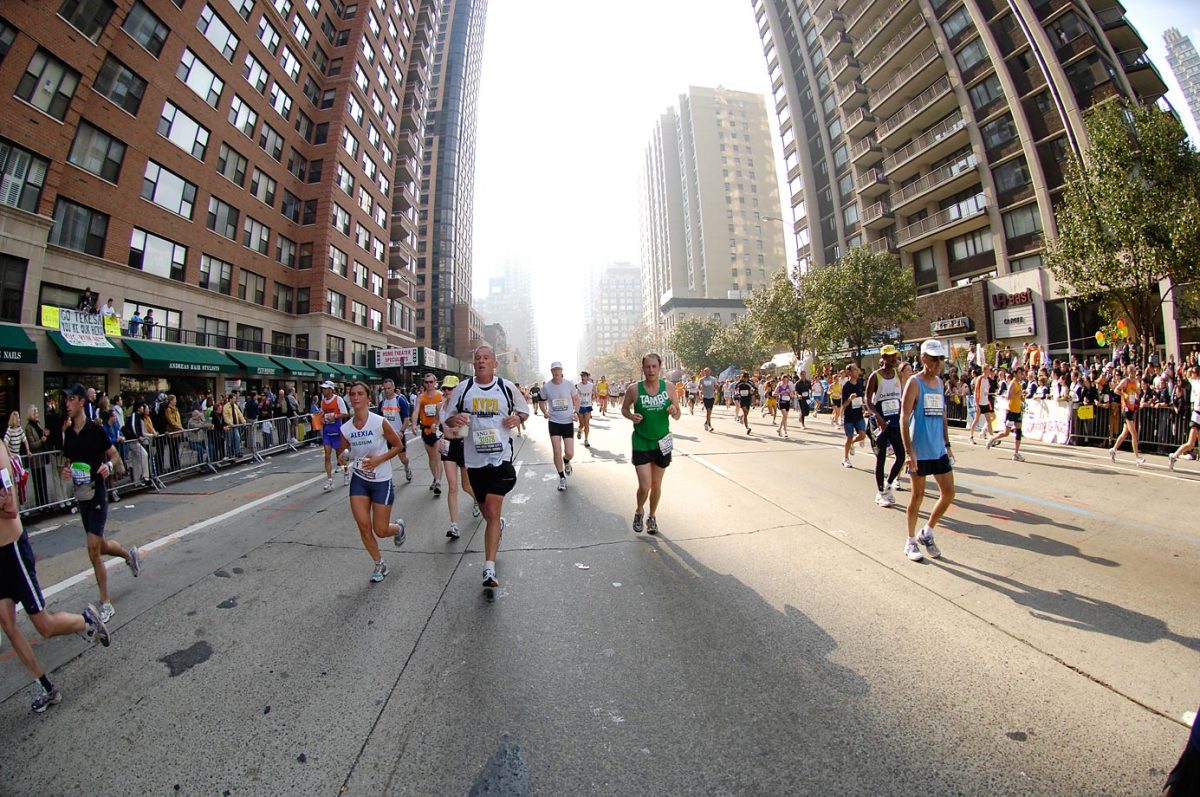
2005
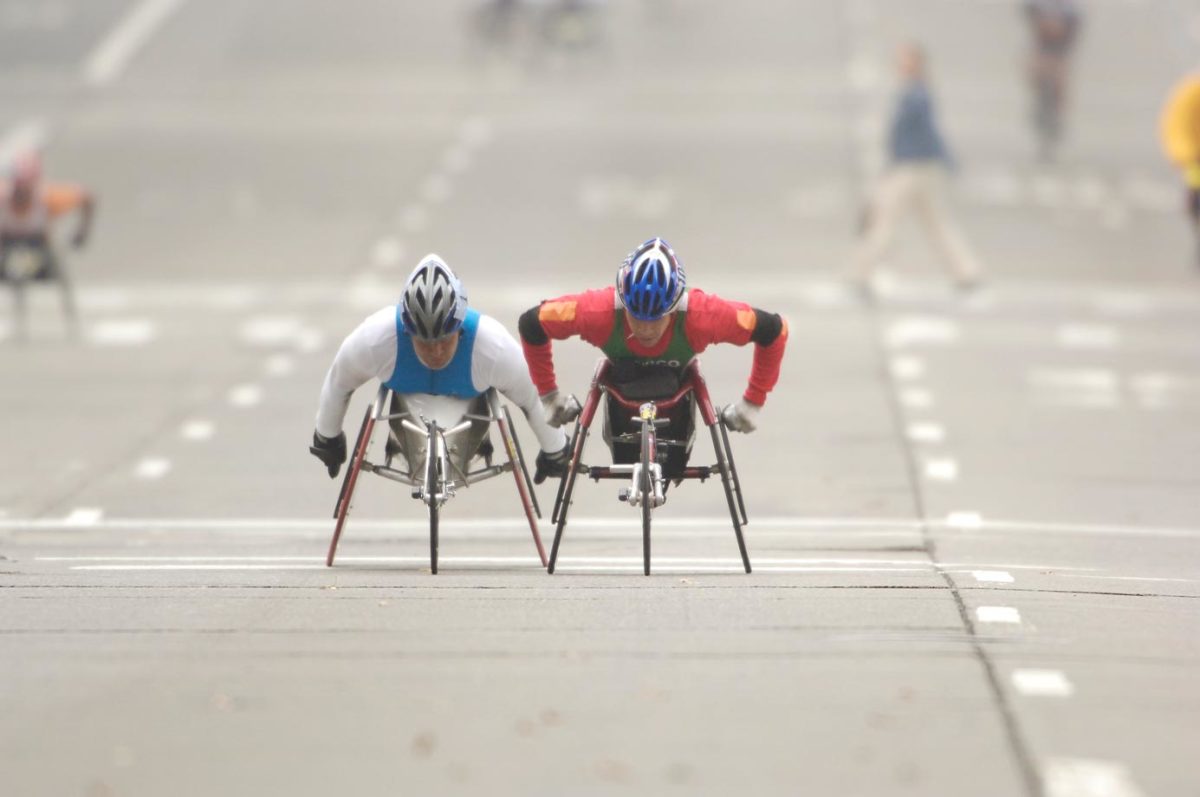
2005
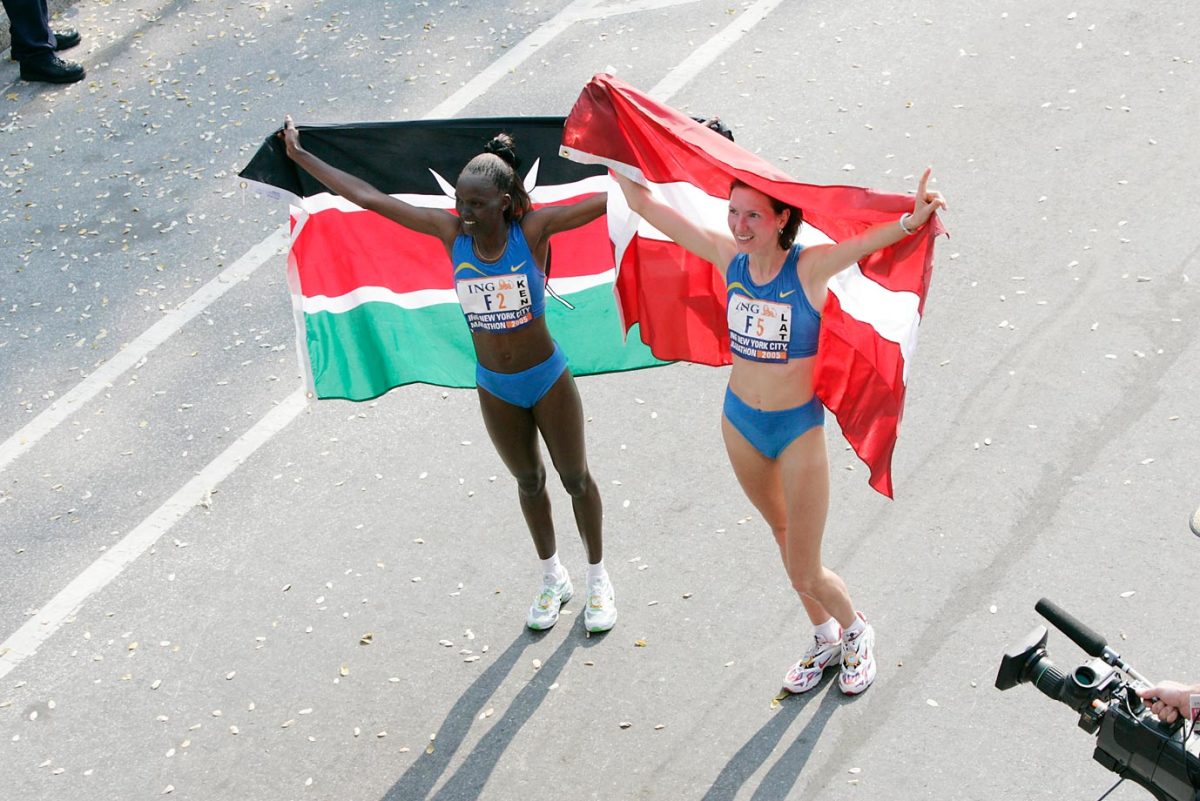
2007
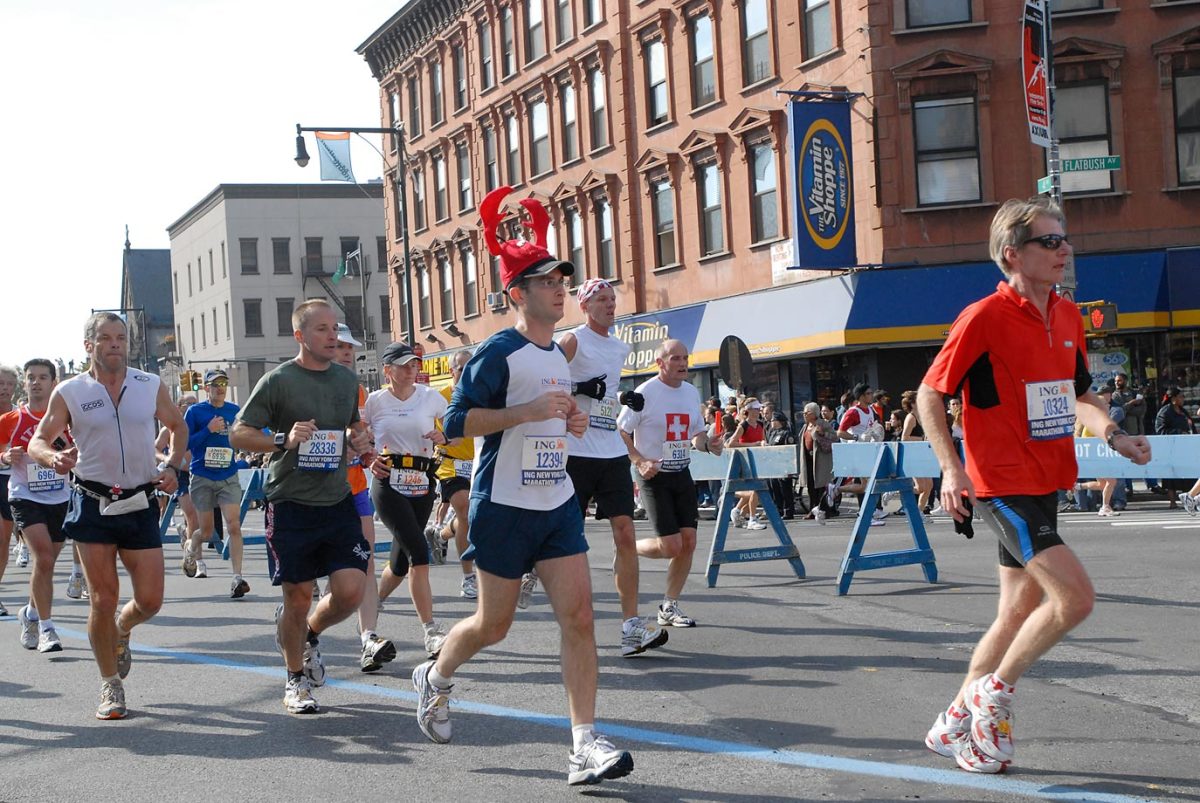
2007
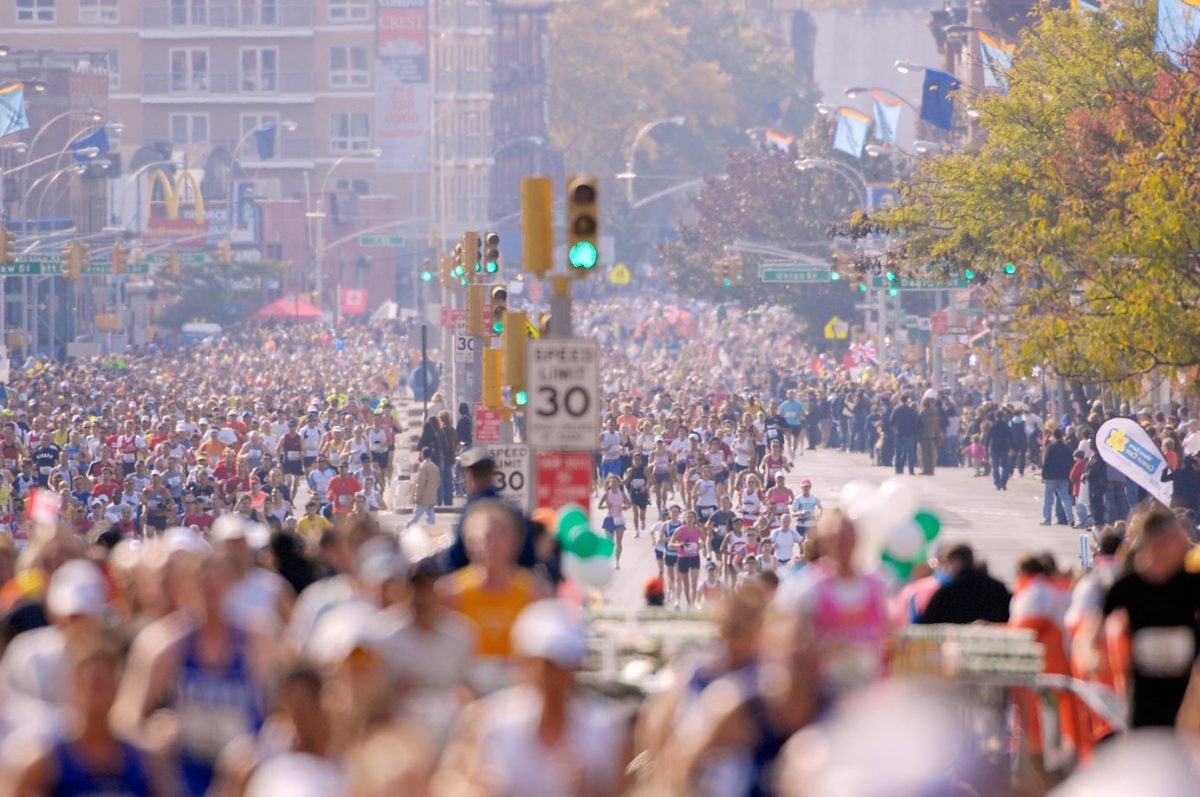
2008
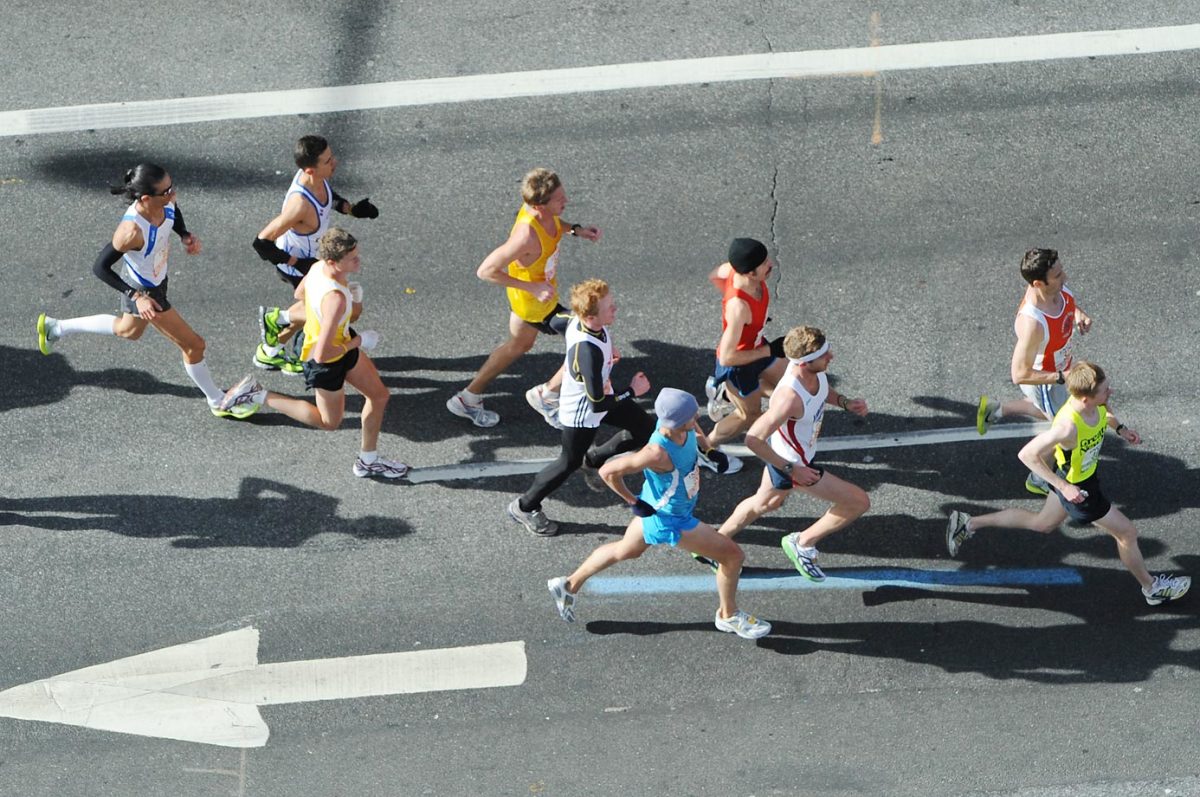
2008
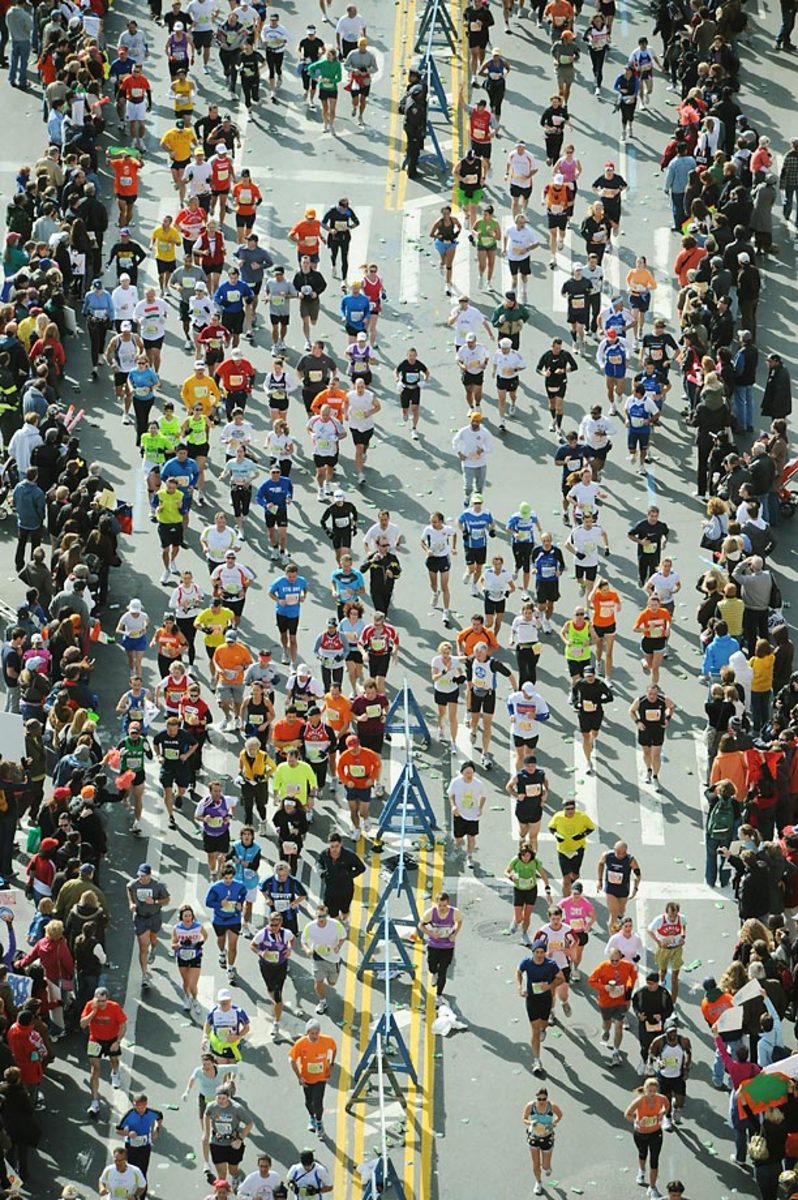
2008
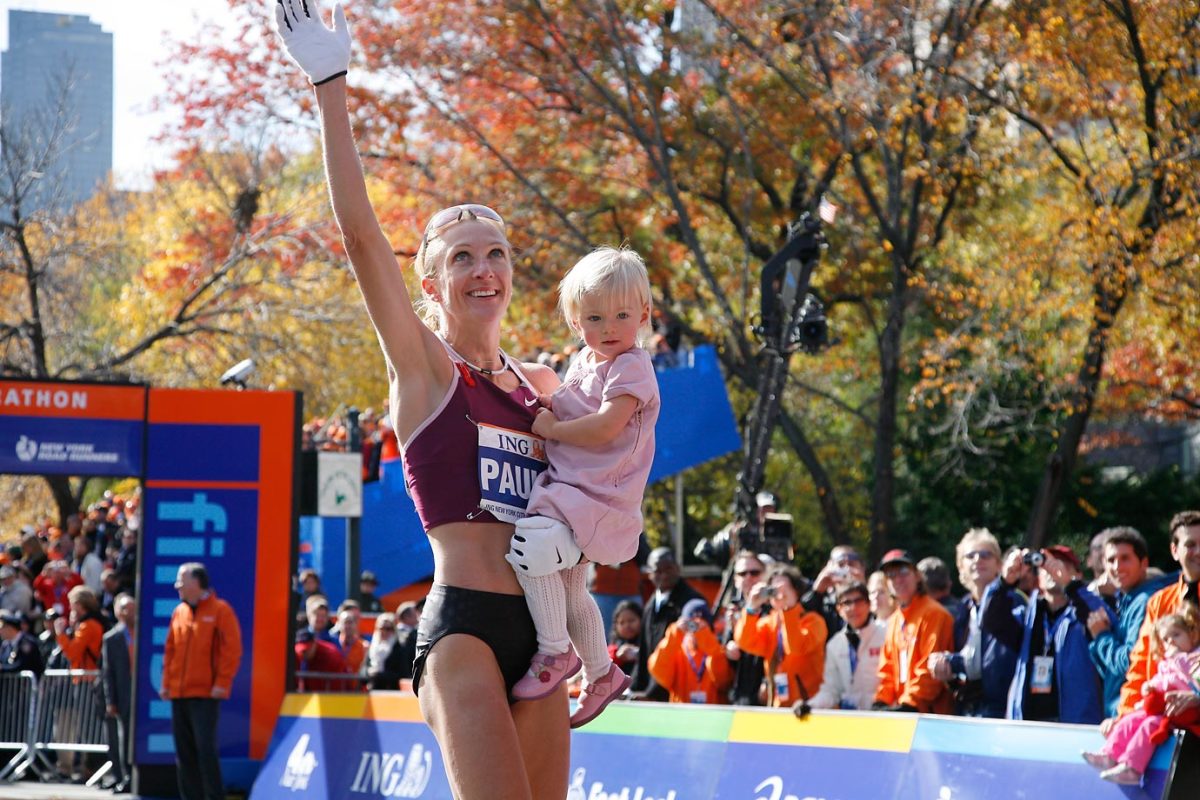
Paula Radcliffe.
2009
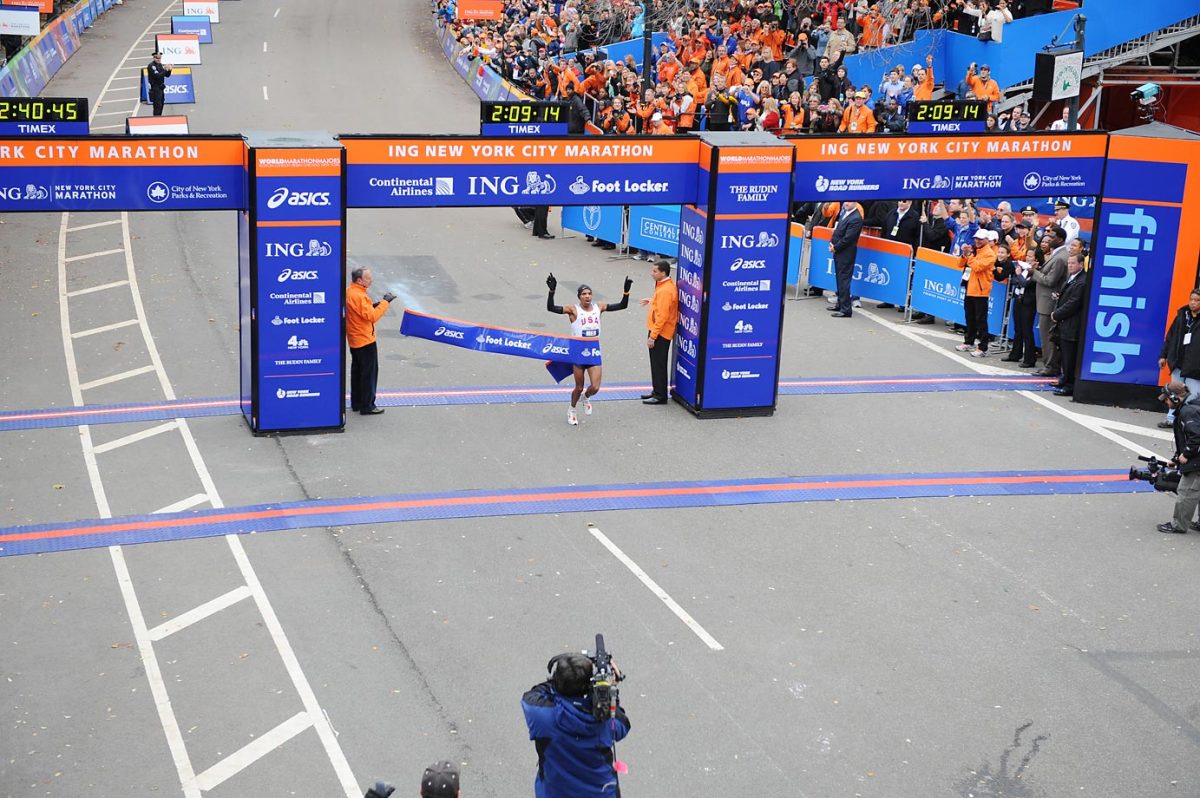
Meb Keflezighi of the U.S., crosses the finish line, becoming the first American to win the race since 1982. His time was 02:09:15.
2009
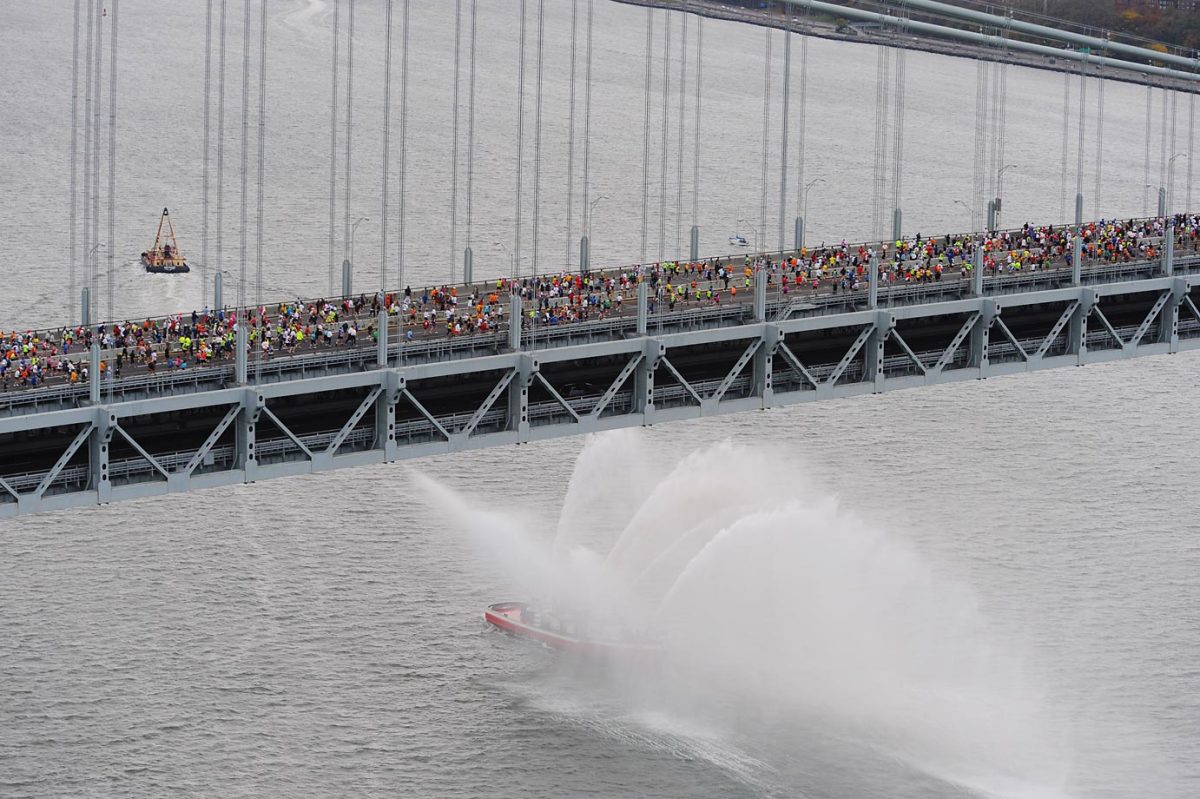
2009
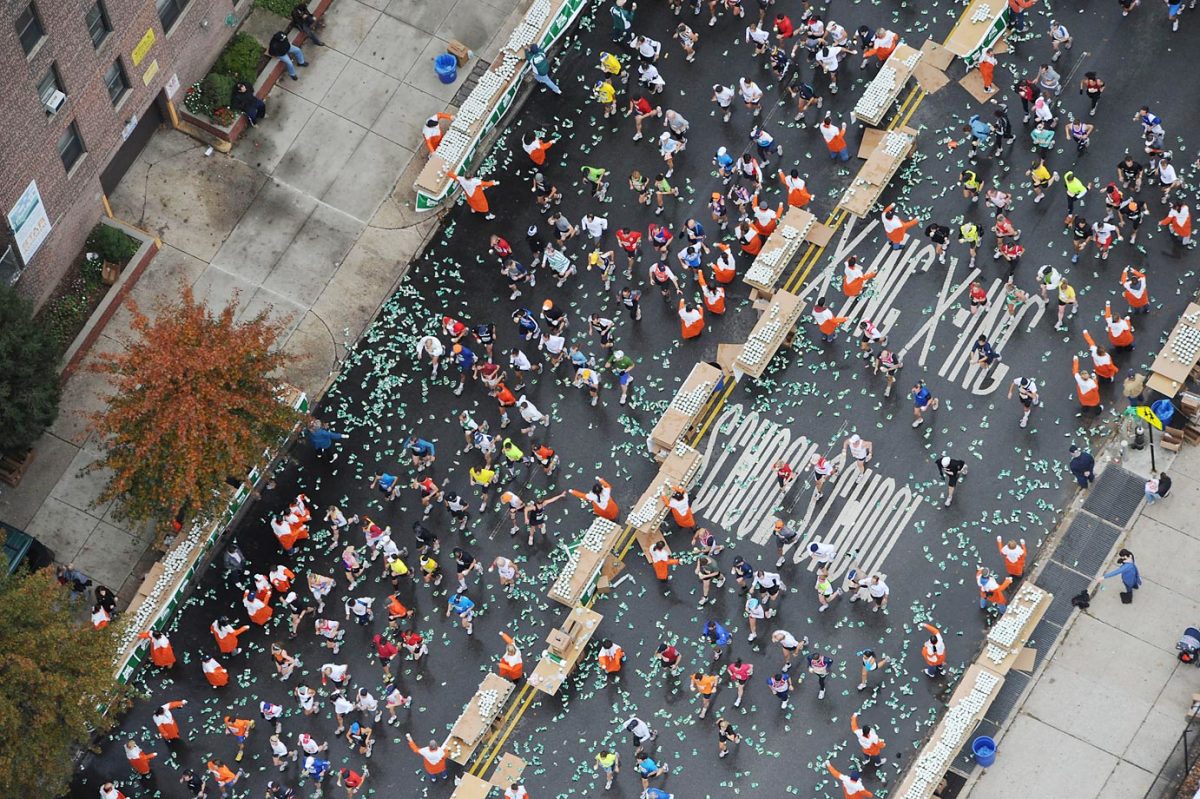
2009

2009
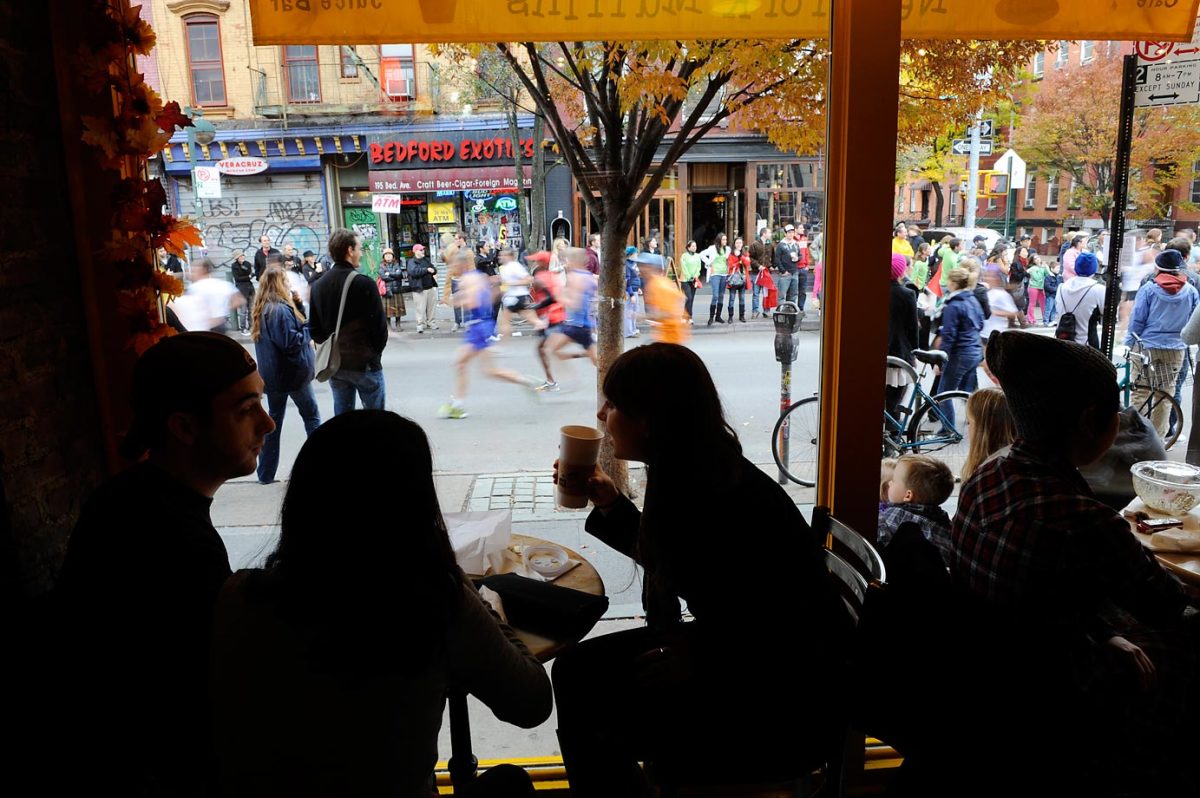
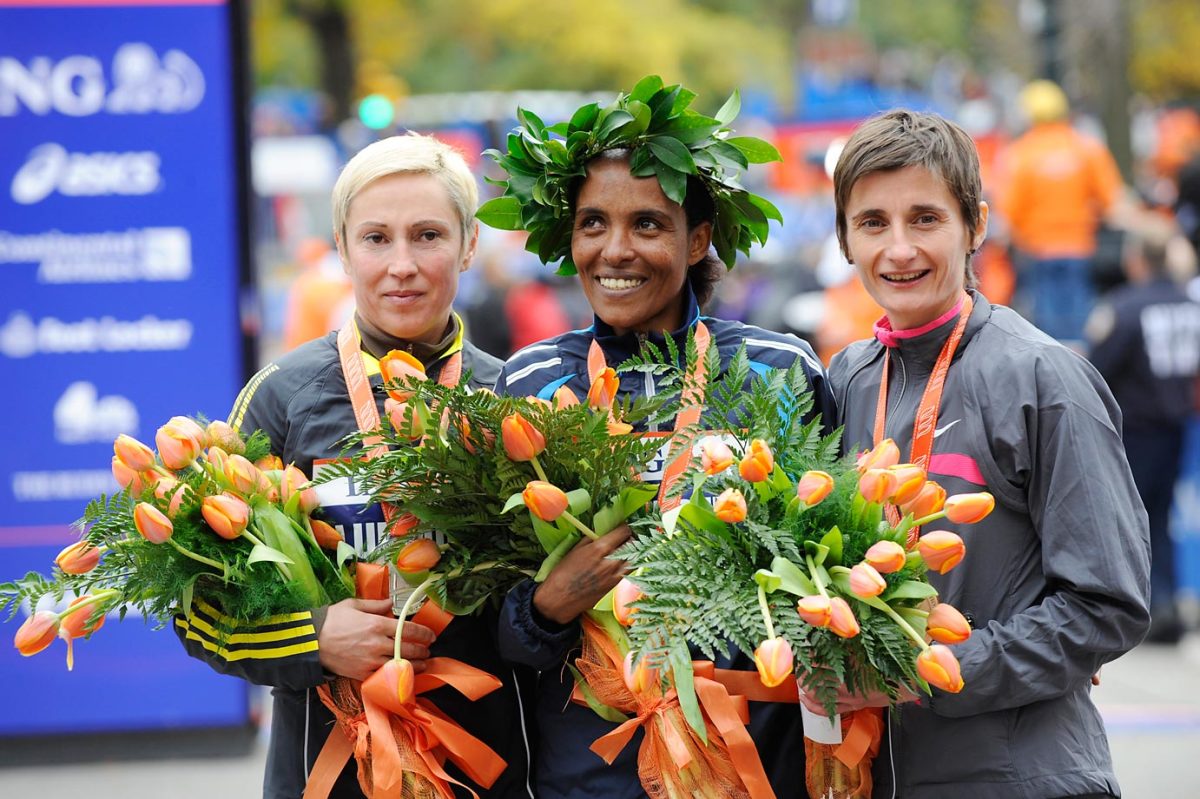
The top three finishers in the women's division, from left: Ludmila Petrova (2nd, 02:29:00) of Russia; Derartu Tulu ( 1st, 02:28:52) of Ethiopia; and Christelle Daunay (3rd, 02:29:16) of France.
2010

2010
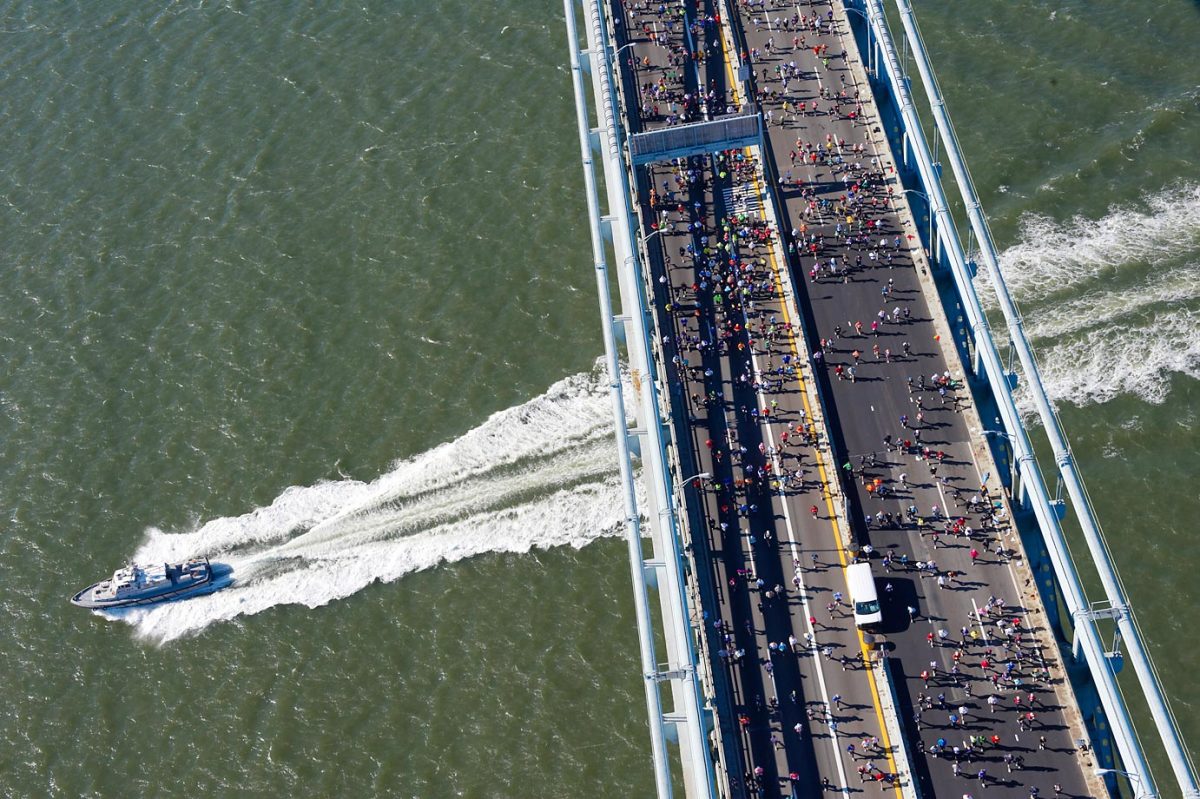
2010

2010
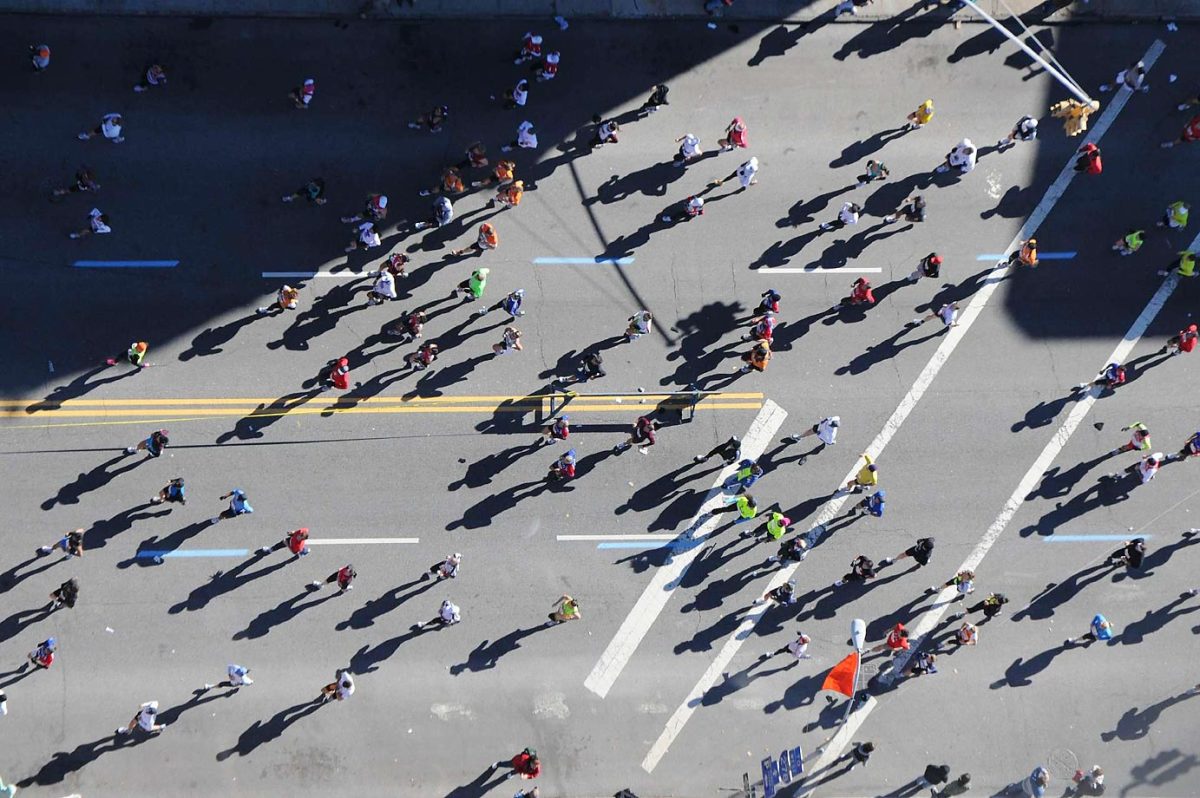
2010
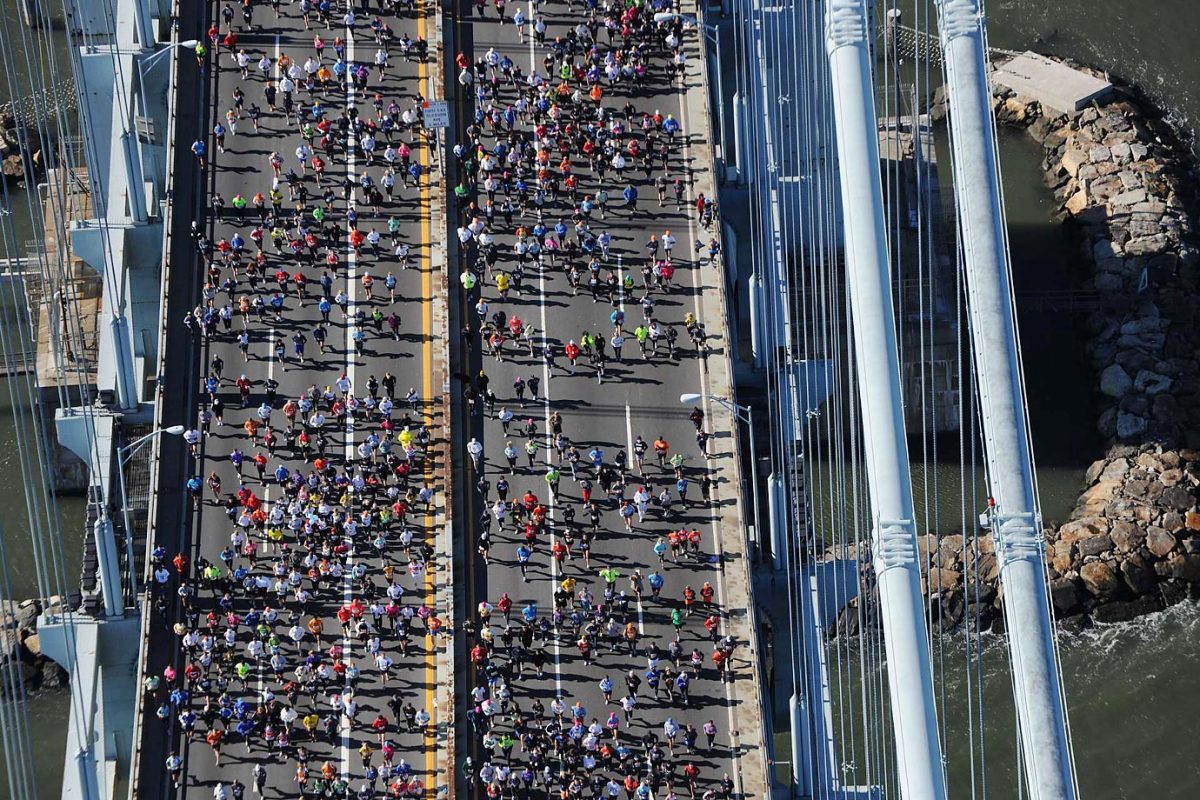
2011
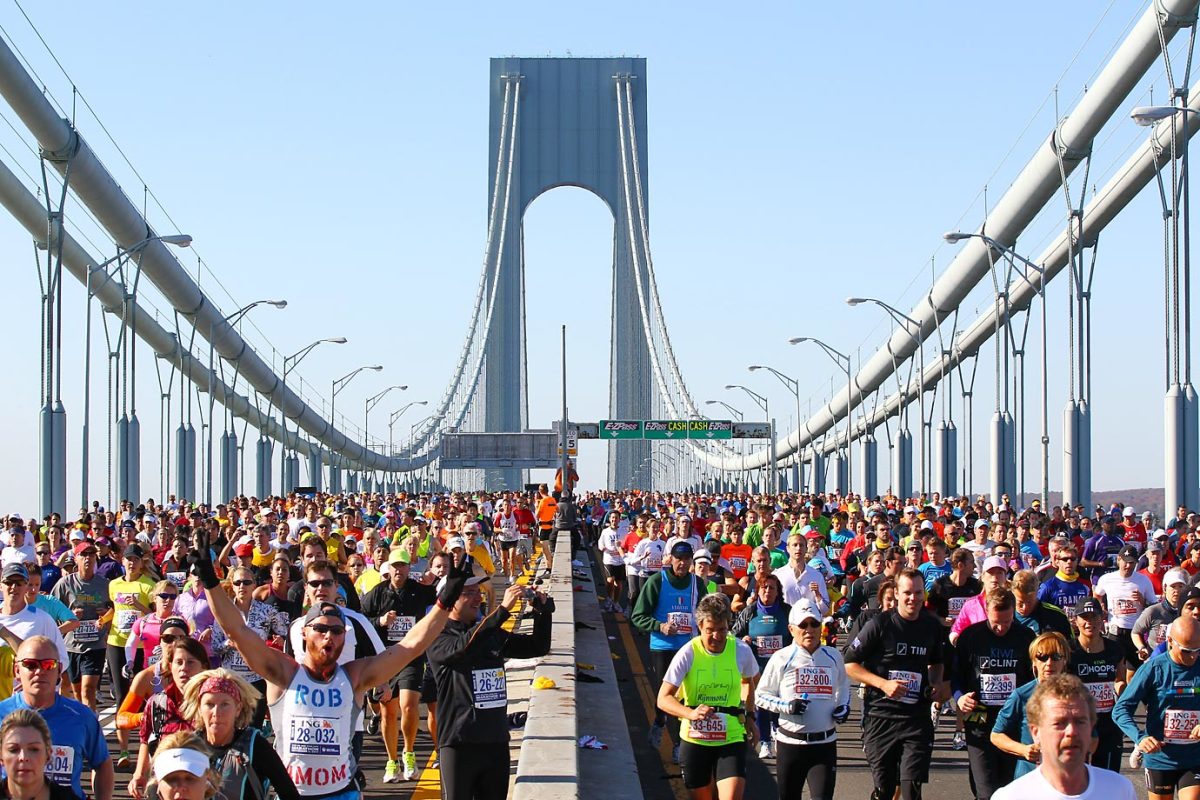
2011
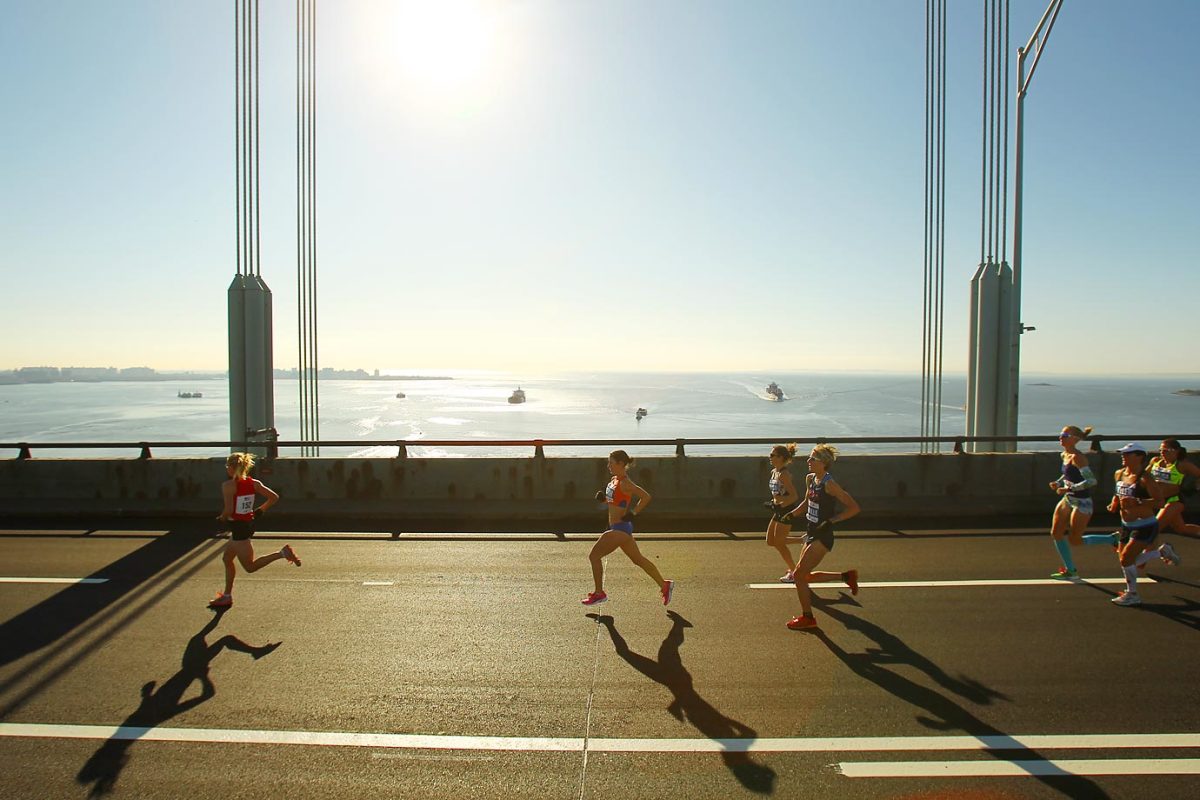
2013
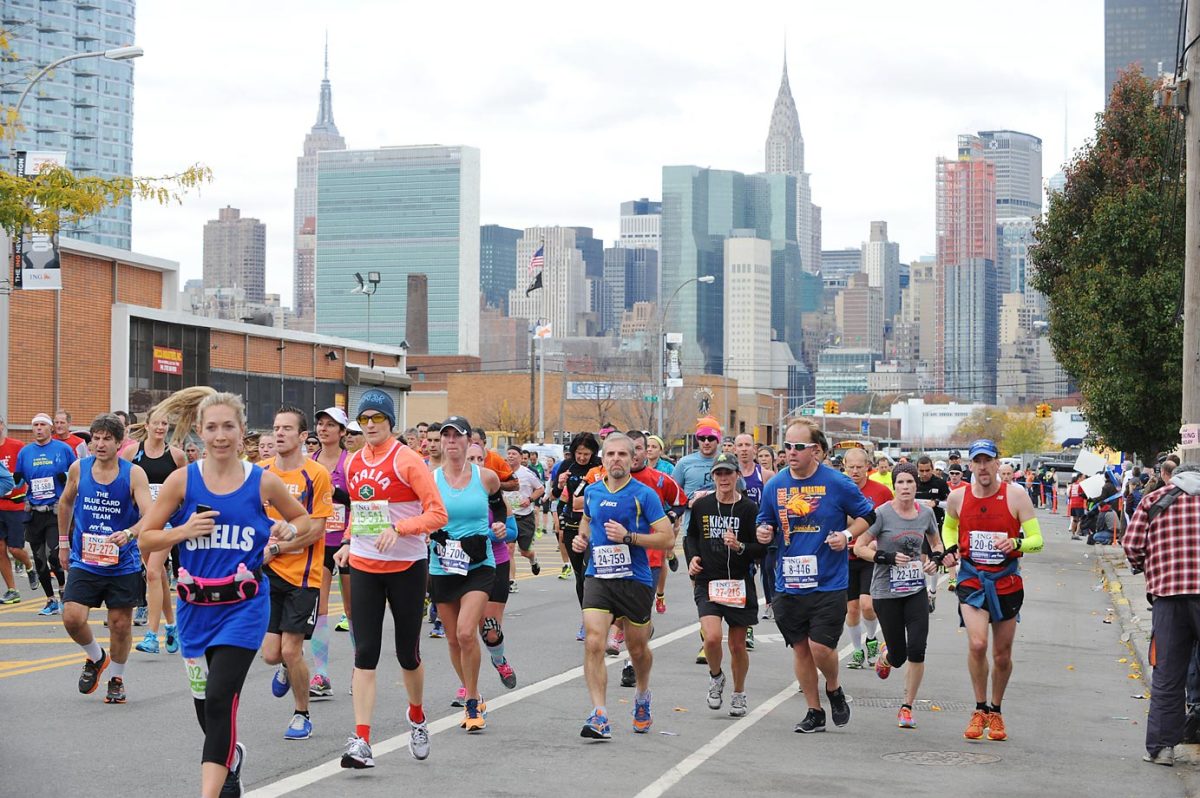
2013
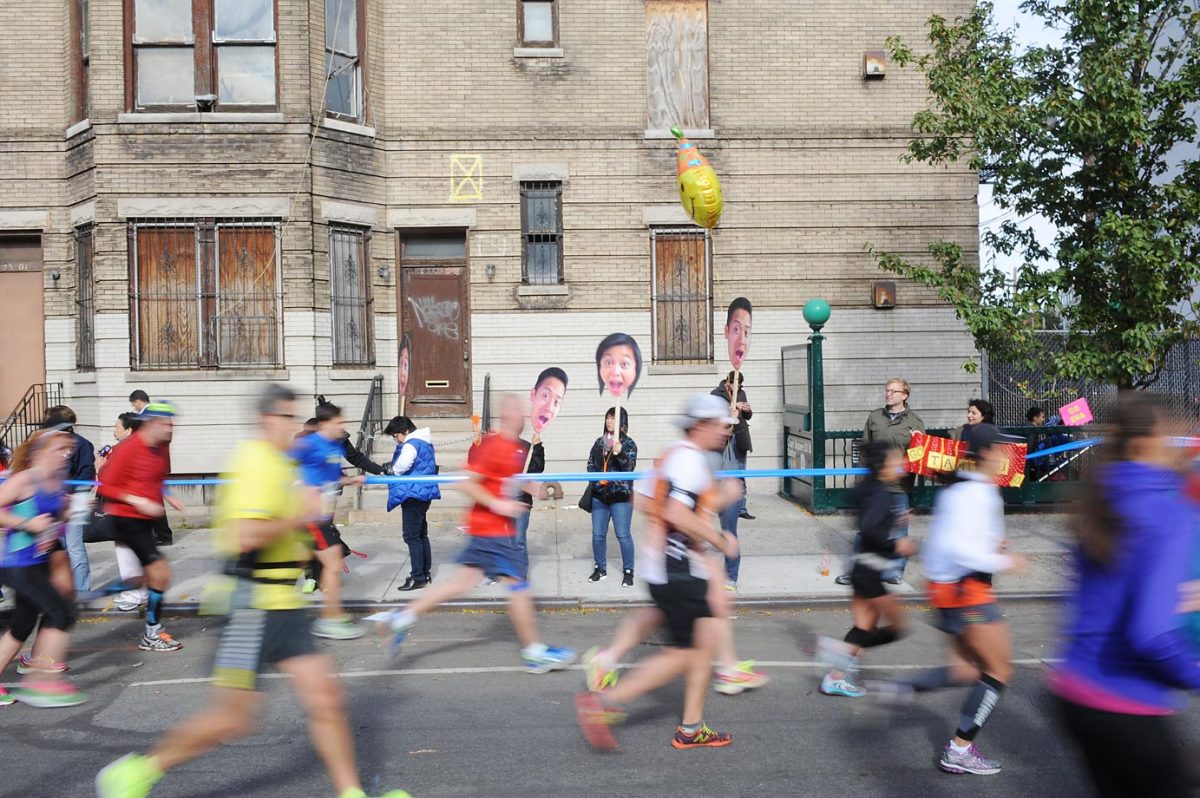
2013
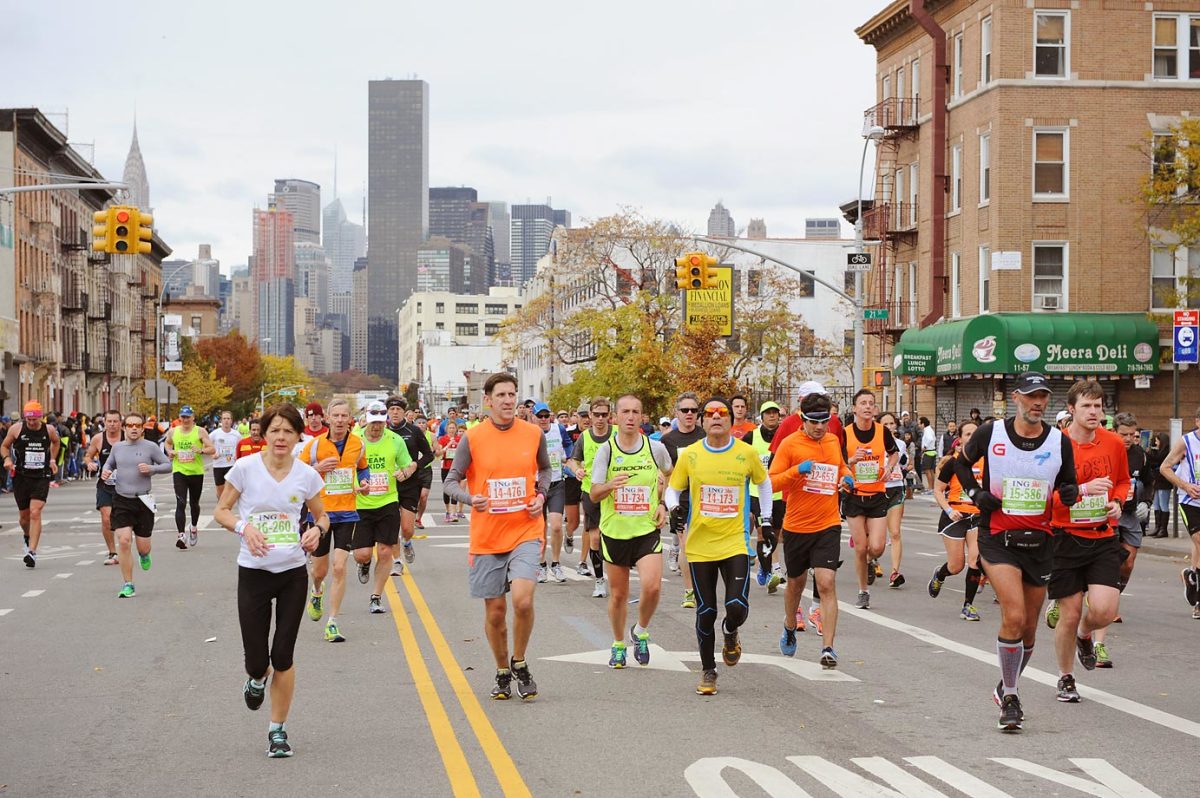
She did do it again, then a couple more times. Her win in the Chicago in October marked in her fifth win in the last six editions of the race. But McFadden has expanded her dominance outside to beyond the Windy City.
Last year, she won four major marathons (Boston, London, Chicago, New York) in a calendar year, to claim the sport’s Grand Slam. She was the first athlete to achieve the feat. And her win in Chicago also extended her streak of marathon victories to seven, and gave her the chance on Sunday to claim her second Slam.
Yet, the race that McFadden remembers most vividly wasn’t one of her races in the Grand Slam. It was the London Marathon in 2011—not for how she won, but for where she went next.
Russia. St. Petersburg, to be exact. She visited the orphanage and met her birth mother. It was when she got the cross necklace.
When asked about the visit, McFadden says she wasn’t scared to go back to the scene of her childhood struggles. The girl who was forced to walk on her hands for the first six years of her life now had a sport that allowed her to fly.
And her plans after New York? McFadden isn’t taking a break. She’ll hop on a plane on Tuesday to compete in another marathon. On Sunday. In Japan. “I’m really excited to see how she fares on that course, because it’s flat and fast,” says Bleakney.
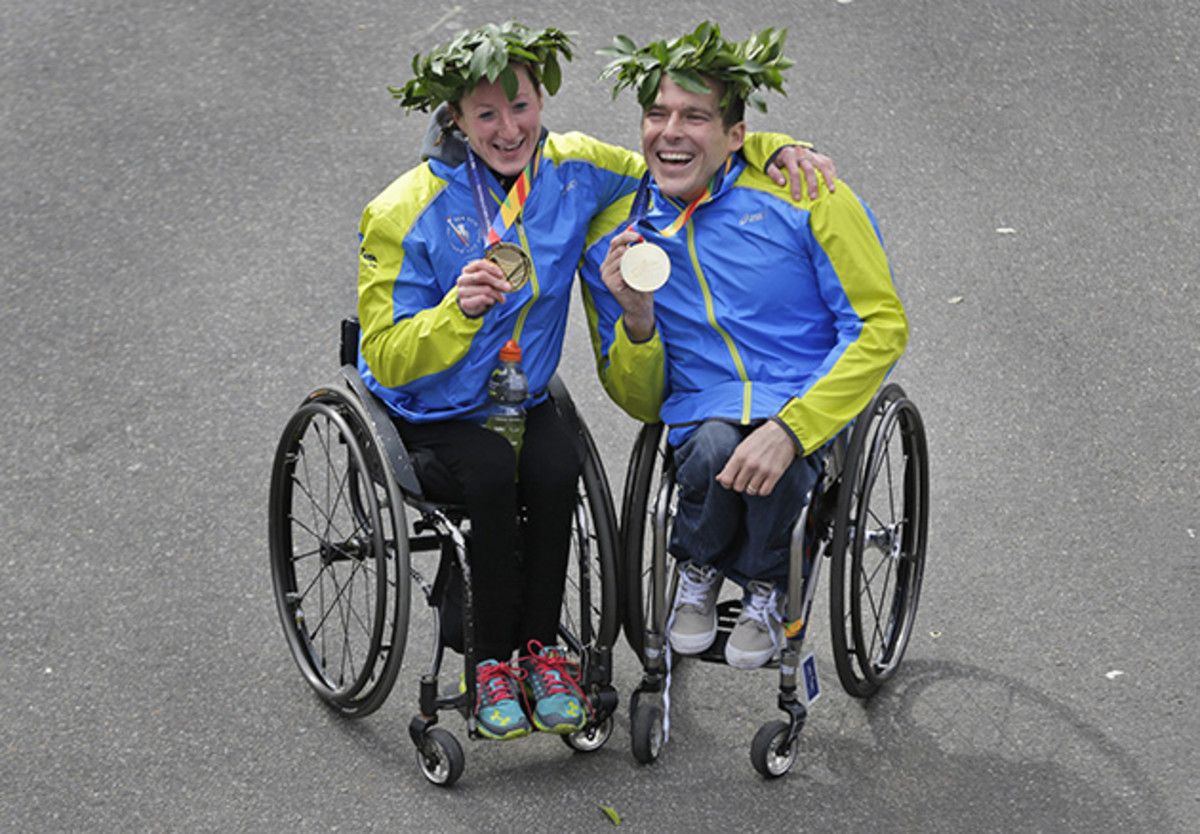
No wonder they call her the Beast.
“I’m not a slacker,” McFadden says. “One day off is another that someone else is getting better.”
While her nickname may fit Tatyana’s competitive prowess and her abilities in the weight room—“She has muscles on top of muscles,” says Bleakney—if you talk to those around her they’ll tell you it doesn’t tell the whole story.
Just go back to last Tuesday in Champaign, Illinois. The team McFadden still trains with was on a 20-mile run. It was the last hard workout before New York, and McFadden was pushing next to her teammate Susannah Scaroni. There was glass in road. Scaroni’s tire went flat. McFadden stopped and wouldn’t leave until she helped her teammate attach a new tire.
“I kept telling her that I was OK and she should go on because she had to prepare for New York,” Scaroni says. “But she refused. That’s what sets Tatyana apart. It doesn’t matter if you’re the slowest or have a flat tire—she’ll always stop and help you.”
Maybe that’s why McFadden graduated with a degree in human development and family studies from Illinois and is working towards her certification as a child-life specialist. Its why she didn’t mind going to the track at 5:30 in the morning this summer so she would have time to train and complete her internship at the Spaulding Rehabilitation Hospital in Boston.
“She has a can-do attitude, and I’m not sure I’ve ever heard her complain whether it’s about training or anything else,” says Scaroni. “In her mind it’s always going to get better.”
***
McFadden was down but she didn’t hesitate. She didn’t ask for assistance. She climbed back into her chair on her own and resumed her race. “I owned it at that moment,” McFadden said. “I got back in and took one look behind me to make sure the girls didn't catch me, and I just continued my way up that last hill right before the finish.”
She won her third New York City Marathon title in 1:42:16, outpacing Schaer by a minute and eight seconds.
As McFadden approached the finish she looked back once more. No racers in sight. Then a round of cheers went up from the 21 family members who had come to support her and to watch her make history.
McFadden pumped her fist. And after she broke the tape she wasn’t alone for long. Deborah was the first to meet her. She draped an American flag on Tatyana’s back and kissed her on the cheek.
It was all the crowd her daughter needed.
Classic SI shots of the New York City Marathon
1978

1979

Bill Rodgers
1979

1980

Grete Waitz
1980

Alberto Salazar
1981

Alberto Salazar
1983


1992

Verrazano Narrows Bridge
1992

Grete Waitz and Fred Lebow
1995

2003

2003

2004

2004

2005

2005

2005

2005

2005

2007

2007

2008

2008

2008

Paula Radcliffe.
2009

Meb Keflezighi of the U.S., crosses the finish line, becoming the first American to win the race since 1982. His time was 02:09:15.
2009

2009

2009

2009


The top three finishers in the women's division, from left: Ludmila Petrova (2nd, 02:29:00) of Russia; Derartu Tulu ( 1st, 02:28:52) of Ethiopia; and Christelle Daunay (3rd, 02:29:16) of France.
2010

2010

2010

2010

2010

2011

2011

2013

2013

2013

